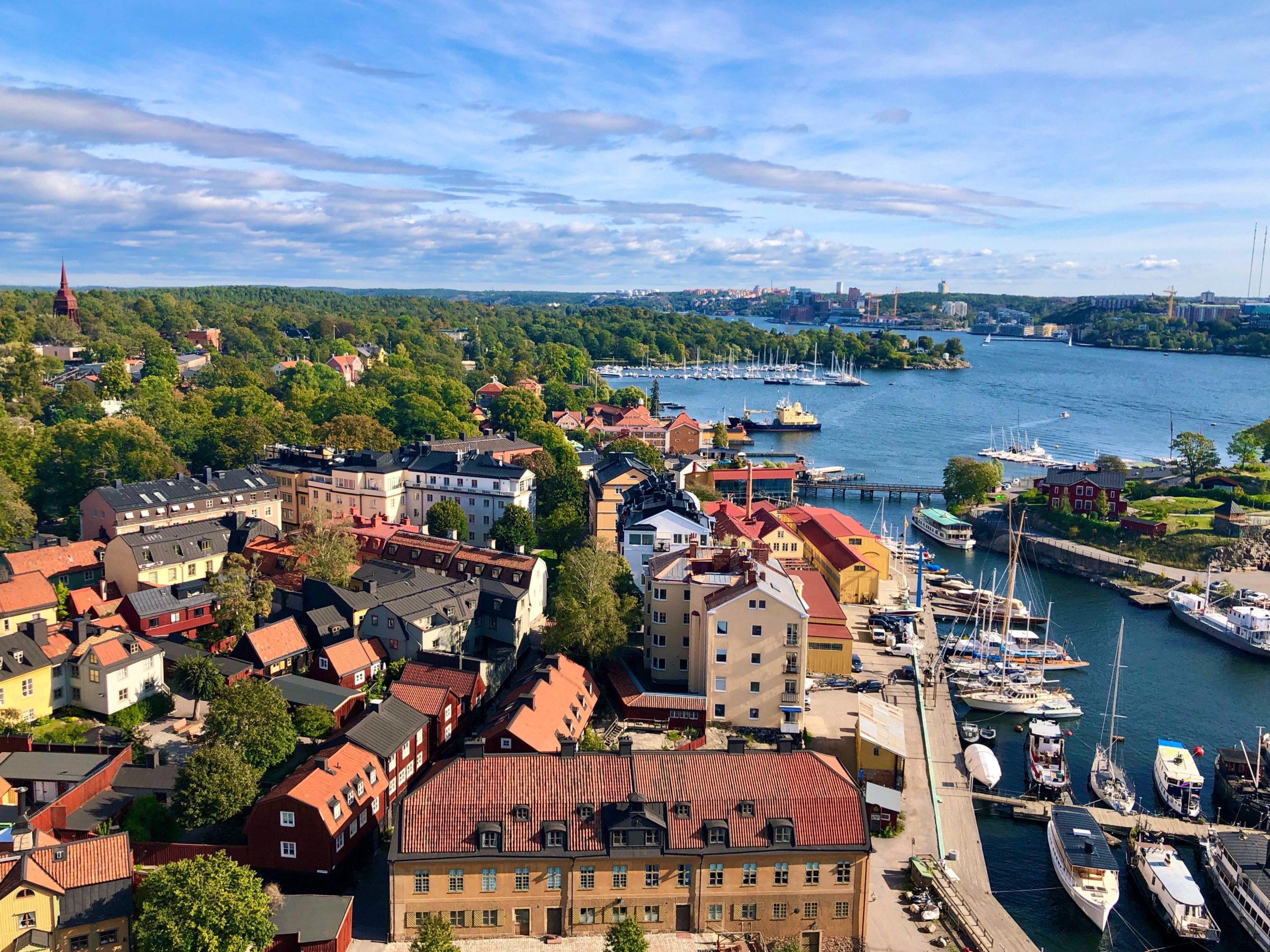Many people see uncertainty as negative.
It means that you cannot plan like you used to, to predict what happens next based on what happened before, and to continue to use the same approaches to driving business success that got you to today.
It puts fear in our minds, inhibits our actions, and limits our progress.
Yet uncertainty is the great shake up. It brings change. And change brings new possibilities. New opportunities to refocus your business, to find new ways to innovate and grow.
Many people life to hide behind that overused phrase VUCA, a military concept for planning in a world of change. Volatile Uncertain Complex Ambiguous. Yet VUCA could equally be more positive, and mean Vibrant Unreal Creative Ambitious.
In The Upside of Uncertainty, academic Nathan Furr and his entrepreneurial wife explore how to embrace uncertainty and transforming it into a force for good. Building on hundreds of interviews, along with pioneering research in psychology, innovation, and behavioural economics, the book offers a range of tools—including mental models, techniques, and reflections—for seeing the upside of uncertainty, developing a vision for what to do next, and opening up to new possibilities.
The Furrs say “Facing uncertainty takes courage, wisdom, and dedication. We use a shimmering red cross as a beacon that anchors the four stages of Uncertainty Possibility” and offer a range of tools built on the motif.
Uncertainty causes discomfort. Even if you chose the situation you find yourself in, a negative or skewed perspective will thwart your efforts and can stop you from even trying. Focusing on the unknown and distressing aspects won’t allow you to see all your options. If you can reframe the uncertainty as possibility, you have taken the most transilient step required. Leaping from an uncertainty to possibility frame can be done in myriad ways. The following are frames or lenses you can try on to access more possibilities.
Uncertainty starts to feel manageable when you combine your reframed outlook with a willingness to prep for the tasks ahead. To prime means to literally make something (or someone) ready for what’s coming. Priming well can take time but brings courage and energy and enlarges the outcomes possible. The finished product is always of a much higher quality.
Taking action is one of the most critical part of navigating uncertainty. Doing something dispels the fog of ambiguity, gives us courage and actually creates the very future we want to live into, especially when you have primed yourself for the possibility you are leaping towards. But moving forward takes finesse and heart, a willingness to learn, a willingness to be wrong and a readiness to change. When you move into the unknown this way, you can’t fail because all of it will be a worthwhile discovery. Even if it means doing it more times and in more ways than you could have imagined, the quality and satisfaction both of the journey and its outcome is born from the why and how you do it.
Sometimes uncertainty is forced on us when we get blindsided by the unexpected. Even when we choose uncertainty, it’s hard and things go differently than planned. Even if leaping over to possibility feels invigorating to you, things will go “wrong” no matter how well you reframe, prime and do.
Sustaining yourself and your projects are heroic tasks even under optimal circumstances. Just as food and drink sustain our bodies, the sustain tools are both the fuel and the pitstops on your Uncertainty Possibility endeavour. Use them when you get knocked off the horse but also remember to use them as daily coping techniques to tune up your heart, mind, body, soul.
The Furrs have produced a great book and set of resources, which you can explore in more detail online.
Jeff Bezos’s legacy is phenomenal. Since throwing in his Wall Street job in 1994 and heading west towards Seattle in a VW campervan to launch an online bookstore (which he initially named Cadabra, before changing it to Amazon), his journey has been unique.
Nobody else has
- Grown a business from zero to $1.5 trillion market cap
- Turned the biggest cost centres into profit centres
- Generated recurring revenues from 82% of US homes
- Hired over half a million people in 12 months
Each year as Amazon CEO, Bezos would write an annual shareholder letter. They became masterclasses in business strategy, and insights into how to achieve success as a leader, in a world of relentless tech-fuelled change.
In this book Walter Isaacson has done a great job in bringing out the best of those letters, plus numerous speeches and interviews. They provide insight into his background, his work, and the evolution of his ideas – an insider’s view of the why and how of his success.
Spanning a range of topics across business and public policy, from innovation and customer obsession to climate change and outer space, this book provides a rare glimpse into how Bezos thinks about the world and where the future might take us.
Some of Bezos’ key themes included
- The importance of a Day 1 mindset
- Why “it’s all about the long term”
- What it really means to be customer obsessed
- How to start new businesses and create significant organic growth in an already successful company
- Why culture is an imperative
- How a willingness to fail is closely connected to innovation
- What the Covid-19 pandemic has taught us
Each insight offers new ways of thinking through today’s challenges—and more importantly, tomorrow’s—and the never-ending urgency of striving ahead, never resting on one’s laurels. Everyone from CEOs of the Fortune 100 to entrepreneurs just setting up shop to the millions who use Amazon’s products and services in their homes or businesses will come to understand the principles that have driven the success of one of the most important innovators of our time.
Best quotes
“Theodor Seuss Geisel: “When something bad happens you have three choices. You can either let it define you, let it destroy you, or you can let it strengthen you.”
“To invent you have to experiment, and if you know in advance that it’s going to work, it’s not an experiment.”
“Cleverness is a gift; kindness is a choice. Gifts are easy—they’re given, after all. Choices can be hard. You can seduce yourself with your gifts if you’re not careful, and if you do, it’ll probably be to the detriment of your choices.”
“I didn’t think I’d regret trying and failing. And I suspected I would always be haunted by a decision to not try at all.”
“Customer trust is hard to win and easy to lose. When you let customers make your business what it is, then they will be loyal to you—right up to the second that someone else offers them better service.”
“You have to use heart and intuition. There has to be risk-taking. You have to have instinct. All the good decisions have to be made that way.”
“I won’t list all of our failed experiments, but the big winners pay for thousands of failed experiments.”
“The way you earn trust, the way you develop a reputation is by doing hard things well over and over and over.”
Jeff Bezos and Walter Isaacson
Jeff Bezos’ Shareholder Letters
Here are all of his letters:
- Jeff Bezos’ 2020 Letter to Shareholders
- Jeff Bezos’ 2019 Letter to Shareholders
- Jeff Bezos’ 2018 Letter to Shareholders
- Jeff Bezos’ 2017 Letter to Shareholders
- Jeff Bezos’ 2016 Letter to Shareholders
- Jeff Bezos’ 2015 Letter to Shareholders
- Jeff Bezos’ 2014 Letter to Shareholders
- Jeff Bezos’ 2013 Letter to Shareholders
- Jeff Bezos’ 2012 Letter to Shareholders
- Jeff Bezos’ 2011 Letter to Shareholders
- Jeff Bezos’ 2010 Letter to Shareholders
- Jeff Bezos’ 2009 Letter to Shareholders
- Jeff Bezos’ 2008 Letter to Shareholders
- Jeff Bezos’ 2007 Letter to Shareholders
- Jeff Bezos’ 2006 Letter to Shareholders
- Jeff Bezos’ 2005 Letter to Shareholders
- Jeff Bezos’ 2004 Letter to Shareholders
- Jeff Bezos’ 2003 Letter to Shareholders
- Jeff Bezos’ 2002 Letter to Shareholders
- Jeff Bezos’ 2001 Letter to Shareholders
- Jeff Bezos’ 2000 Letter to Shareholders
- Jeff Bezos’ 1999 Letter to Shareholders
- Jeff Bezos’ 1998 Letter to Shareholders
- Jeff Bezos’ 1997 Letter to Shareholders

Here is an analysis of each of the above letters by CB Insights:
- 2020: Company culture can be both employee-centric and customer-centric
- 2019: In times of crisis, be aggressive and agile
- 2018: Wandering is an essential counterbalance to efficiency
- 2017: Build high standards into company culture
- 2016: Move fast and focus on outcomes
- 2015: Don’t deliberate over easily reversible decisions
- 2014: Bet on ideas that have unlimited upside
- 2013: Decentralize decision-making to generate innovation
- 2012: Surprise and delight your customers to build long-term trust
- 2011: Self-service platforms unlock innovation
- 2010: R&D should pervade every department
- 2009: Focus on inputs — the outputs will take care of themselves
- 2008: Work backwards from customer needs to know what to build next
- 2007: Missionaries build better products
- 2006: Nurture your seedlings to build big lines of business
- 2005: Don’t get fixated on short-term numbers
- 2004: Free cash flow enables more innovation
- 2003: Long-term thinking is rooted in ownership
- 2002: Build your business on your fixed costs
- 2001: Measure your company by your free cash flow
- 2000: In lean times, build a cash moat
- 1999: Build on top of infrastructure that’s improving on its own
- 1998: Stay terrified of your customers
- 1997: Bring on shareholders who align with your values
People think that when you want to change your life, you need to think big. James Clear describes another way. He knows that real change comes from the compound effect of hundreds of small decisions: doing two push-ups a day, waking up five minutes early, or holding a single short phone call.
He calls them atomic habits.
In this excellent book, Clear describes exactly how these minuscule changes can grow into such life-altering outcomes. He uncovers a handful of simple life hacks (the forgotten art of Habit Stacking, the unexpected power of the Two Minute Rule, or the trick to entering the Goldilocks Zone), and delves into cutting-edge psychology and neuroscience to explain why they matter. Along the way, he tells inspiring stories of Olympic gold medalists, leading CEOs, and distinguished scientists who have used the science of tiny habits to stay productive, motivated, and happy.
These small changes will have a revolutionary effect on your career, your relationships, and your life.
Best quotes
“The most effective way to change your habits is to Focus not on what you want to achieve, but on who you wish to become.”
“You get what you repeat. Your outcomes are a lagging measure of your habits. Your weight is a lagging measure of your eating habits. Your net worth is a lagging measure of your financial habits.”
“Changing our habits is challenging for two reasons: (1) We try to change the wrong thing and (2) We try to change our habits in the wrong way.”
“The culture we live in determines which behaviors are attractive to us. We tend to adopt habits that are praised and approved of by our culture This is mainly because we have a strong desire to fit in and belong to the tribe.”
“One of the most effective things you can do to build better habits is to join a culture where: (1) Your desired behavior is the normal behavior and (2) You already have something in common with the group.”
“Habits are attractive when we associate them with positive feelings and unattractive when we associate them with negative feelings. Create a motivation ritual by doing something you enjoy immediately before a difficult habit.”
“Pick the right habit and progress is easy. Pick the wrong habit and life is a struggle.” Habits are easier to embrace when they connect with your natural abilities. What suits you? How do they play to your strengths?
James Clear
One Pager

“Deep work” is the ability to focus without distraction on a cognitively demanding task. Lock yourself away in a room to focus completely on one task. Avoid shallow work, keeping busy, multi tasking, being distracted.
Deep work is a skill that allows you to quickly master complicated information and produce better results in less time. Deep work will make you better at what you do and provide the sense of true fulfilment that comes from craftsmanship. In short, deep work is like a super power in our increasingly competitive twenty-first century economy. And yet, most people have lost the ability to go deep—spending their days instead in a frantic blur of e-mail and social media, not even realizing there’s a better way.
In his new book Deep Work, author and professor Cal Newport flips the narrative on impact in a connected age. Instead of arguing distraction is bad, he instead celebrates the power of its opposite. Dividing this book into two parts, he first makes the case that in almost any profession, cultivating a deep work ethic will produce massive benefits. He then presents a rigorous training regimen, presented as a series of four “rules,” for transforming your mind and habits to support this skill.
A mix of cultural criticism and actionable advice, Deep Work takes the reader on a journey through memorable stories—from Carl Jung building a stone tower in the woods to focus his mind, to a social media pioneer buying a round-trip business class ticket to Tokyo to write a book free from distraction in the air—and no-nonsense advice, such as the claim that most serious professionals should quit social media and that you should practice being bored.
Best quotes
“Who you are, what you think, feel, and do, what you love—is the sum of what you focus on.”
“The advantage of cultivating concentration so intense is that there is no attention left over to think about anything irrelevant, or to worry about problems.”
“Human beings, it seems, are at their best when immersed deeply in something challenging. The best moments usually occur when a person’s body or mind is stretched to its limits in a voluntary effort to accomplish something difficult and worthwhile.”
“To learn, in other words, is an act of deep work. If you’re comfortable going deep, you’ll be comfortable mastering the increasingly complex systems and skills needed to thrive.”
“Decades of work from multiple different subfields within psychology all point toward the conclusion that regularly resting your brain improves the quality of your deep work.”
“Separate your pursuit of serendipitous encounters from your efforts to think deeply and build on these inspirations. You should try to optimize each effort separately, as opposed to mixing them together into a sludge that impedes both goals.”
“Spending time in nature can improve your ability to concentrate. This resource is finite: If you exhaust it, you’ll struggle to concentrate.”
“By supporting deep work with rock-solid routines that make sure a little bit gets done on a regular basis, the rhythmic scheduler will often log a larger total number of deep hours per year.”
More from Cal Newport
https://www.youtube.com/watch?v=wXIsy5Mhbzw
In summary
Here’s a visual one page summary from Doug Neill at VerbaltoVisual:

Adobe CEO Shantanu Narayen is the world’s best CEO according to a global ranking by Comparably, based on employee reviews. He is followed by IBM’s Arvind Krishna, and Satya Nadella at Microsoft.
HBR‘s best-performing CEO rankings, using total shareholder return delivered during their tenure was last published in 2019, and ranked Nvidia’s Jensen Huang top, followed by Marc Benioff at Salesforce and François-Henri Pinault of Kering.
A key role is in building the reputation of the organisation, with all stakeholders, and in society at large. The Brand Guardianship Index ranks Mastercard’s Ajay Banga as top CEO, followed by Huang and Netflix’s Reed Hastings.
The new DNA of leadership
In my book Business Recoded: have you the courage to create a better future? I ask “What kind of future do you want to create, shape and lead?”
The future business will only emerge with your leadership. Leaders need the courage to step up, to envision and implement this future.
Having spent many hours with leaders, one to one, and with their teams – teaching, coaching and advising them on strategies and change – and explored the many leadership theories, and insights from today’s most inspiring leaders – it became clear that there are some common attributes.
These attributes form a pyramid, somewhat analogous to Maslow’s hierarchy of needs. At the foundation are the essentials required to operate, and deliver performance. Above these are the attributes required for progress, to make sense of change, to find new growth, and drive innovation.
At the top are the attributes required of leaders who want to transform their organisations, guided by purpose beyond profit, to create a better business, and a better world.

In research for the book we found that these 12 attributes collectively make up the “new DNA of leadership”, with 3 levels from the top to the bottom:
“Creating better futures” attributes:
- Inspiring… being guided by a purpose and passion
- Courageous… daring to do what hasn’t been done before
- Farsighted … looking ahead with vision, foresight and intuition
- Progressive… pioneering, embracing challenge, seizing opportunities
“Making change happen” attributes:
- Curious… making sense of new, complex and uncertain environments
- Imaginative… envisioning a better future worth working towards
- Adaptive… having emotional agility to survive and drive relentless change
- Entrepreneurial… the creative spirit to explore new ideas and think differently
“Delivering positive impact” attributes
- Empathetic … engaging people, tapping into their human qualities
- Collaborative … working together, embracing diversity, to achieve more
- Resilient… sticking to the task, enduring turbulence, motivated and optimistic
- Impactful… making a positive difference to business, stakeholders and the world
Have the courage to lead the future
The implications for business are broad and significant: a better approach to people and the jobs they do, organisation structures and how people work, a different approach to strategic development and innovation, how brands develop and engage customers, and a more enlightened approach to how businesses grow to create and share value.
The new codes of business challenge our deeply engrained assumptions and practices, some extending and strengthening what we already do, others replacing the old ways.
There is no magic formula for business success, although plenty of concepts and models, frameworks and tools which can help. Developing leaders in today’s world is much more of a mindset, a way of thinking, opening your mind to a new world of possibilities, and the many ways to succeed in it. Most importantly it includes the inspiration to do it.
Inspiration, for me, comes from real people – ordinary people who have applied themselves to make dreams come true, turn challenge into opportunity, bring others together to achieve incredible results. I am most inspired by people around the world, who are leading, shaping and creating the businesses of the future right now.
7 Big Questions for CEOs
When working with a CEO catalyst and coach, I often sit down with leaders initially, and before we get into the detail of mapping out new transformational ideas, strategies and priorities, I encourage them to stop and reflect on their role:
- Can you articulate a vision for the future, and a strategic plan to get there?
- Can you make the culture real, and matter to people?
- Can you build teams where people can stretch themselves, safe together?
- Can you lead transformation?
- Can you really listen to people, see other viewpoints, and open to new ideas?
- Can you handle a crisis?
- Can you manage yourself, the many conflicting demands and priorities?
How CEOs spend their time
“Time is the scarcest resource leaders have. Where they allocate it matters – a lot” starts a recent Harvard report.
When I first stepped into the CEO role, this was my biggest challenge. My schedule no longer seemed like my own. In fact I’d made a point of managing my own online calendar until that point, choosing who to say yes or no to, and protecting time for myself. Now, as CEO, my schedule seemed to have become corporate property. Everybody wanted time, be it a one hour (why?) meeting, or a quick 5 minutes. Not just direct reports, but other stakeholders – particularly suppliers, and media.
I soon realised I needed to take control. A life of back to back meetings is far from productive. Leaders shouldn’t be the central point to every decision and action, and can quickly become the choke point, stopping anything happen. Time was the key. And I needed to recognise how I could best use it – while also staying effective, healthy and sane.
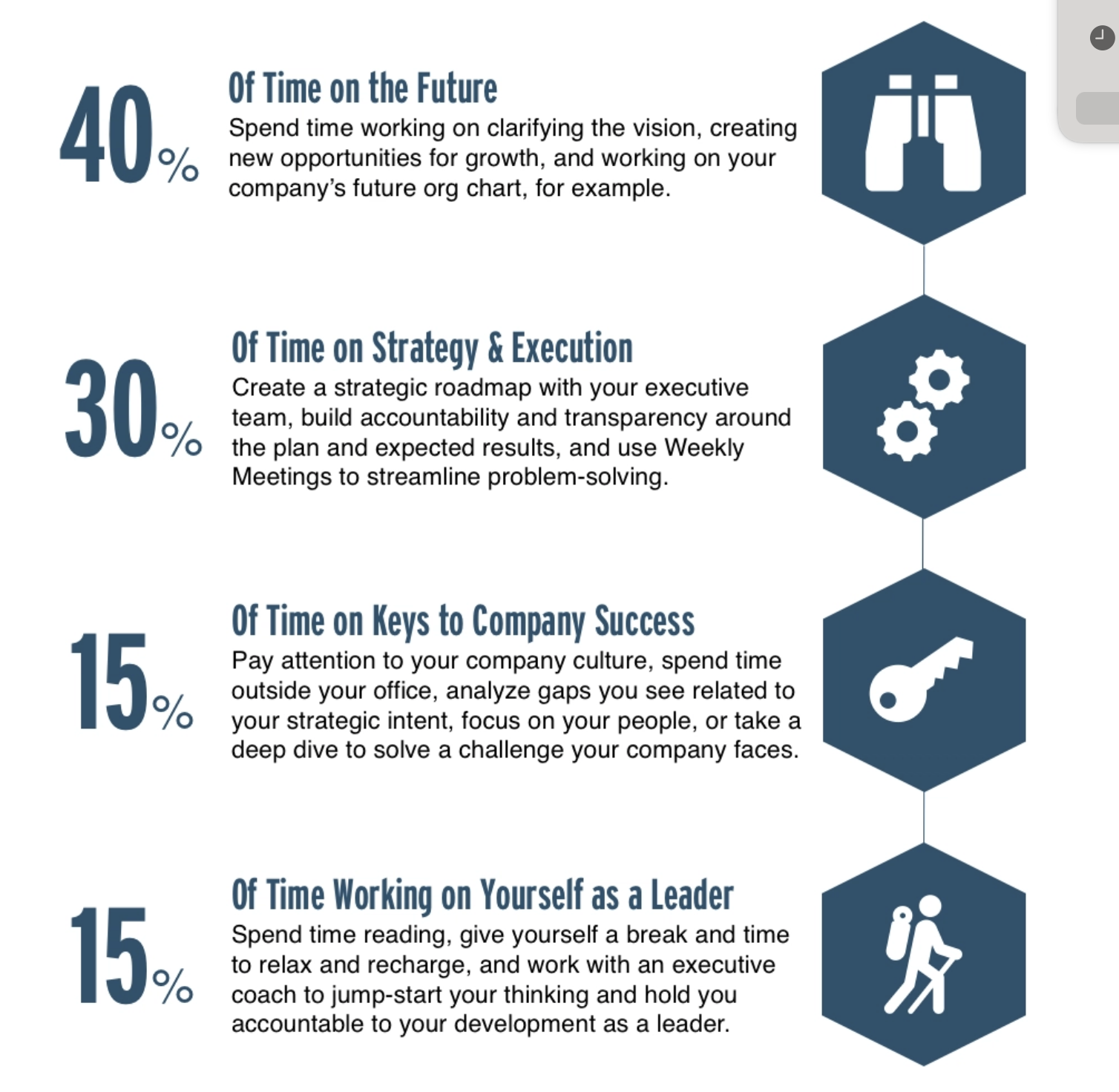
I’ve spent considerable time in recent years working with the business leaders of Microsoft, an organisation that has been transformed over the last 8 years, both culturally and commercially, by CEO Satya Nadella.
Nadella has two constants in his daily morning routine – exercise and self-reflection. Waking up at 7am, after getting his usual eight hours of sleep, the first thing he does is ask himself “what are you thankful for?” It’s a ritual he picked up from Dr. Michael Gervais, a high performance psychologist who has coached Microsoft employees and the Seattle Seahawks. “It’s just grounding. It gives you the ability to get up in the morning and orient yourself for the day,” he said on LinkedIn’s Hello Monday podcast.
Then it’s time for exercise. “For me, the daily ritual is just a half-hour of hitting the gym every day,” he said. “It doesn’t matter where I am, what time zone, how late I got in, I get up and get to the gym. It’s just 30 minutes of running, and it just makes a huge difference.”
Importantly Nadella doesn’t see “work and life” as a balancing act, but rather as work-life harmony, even though that hasn’t always been the case, “I used to always think that you need to find that balance between what’s considered relaxing versus what is working,” he told the Australian Financial Review. Now it’s all about integrating the two aspects of his life. “What I’m trying to do is harmonize what I deeply care about, my deep interests, with my work,” Nadella said, who believes that this approach “gives me a tremendous amount of satisfaction and energy to go back to work.”
“When Satya steps in the house, Dad’s home,” said his wife, Anu, in an interview with Good Housekeeping. “And Dad does homework with the kids, sits with us at the table. When we go to public places, he’s recognized, and the girls see that, but has it affected their everyday peace? I don’t think so. Our private lives are pretty private.”
Harvard’s soft skills are hard
HBS asked 1700 business leaders across 90 countries about what they thought makes a great leader in today’s world.
You might think that companies in an ever-changing world need a steady hand, with foresight and experience, who plots a sensible route to cautiously and competently travel. And, of course, to be digitally literate. Not crucial, they found.
71% of leaders said that adaptability was the most important leadership quality in these times.
They also ranked creativity, curiosity, and comfort with ambiguity as highly desirable traits. “It’s the soft skills that I argue are not soft anymore,” said the chairman of a major African retailer.

Less than half think that they or their colleagues have the right mindset and skills to lead in the digital era. “It’s about curiosity not coding” … Here are some of the other insights
-
Be an explorer – get outside, be curious, listen, be humble
-
Trust and let go – distribute authority, lean on others, curate talent
-
Be a catalyst, not a planner – add new ideas, context and conditions
-
Be courageous – experiment, iterate, and pivot yourself
-
Be present – empathetic, vulnerable, storytellers, self aware
-
Live values with conviction – share purpose, deliver on it
HBS’ research concluded “Leaders who set out to reshape their companies to compete in a fast-evolving digital world often come to a daunting realisation: To transform their organisations, they must first transform themselves.”
McKinsey’s 6 CEO mindsets
McKinsey’s Center for CEO Excellence recently analysed the behaviours of 67 of the highest performing CEOs around the world. They found no simple recipe for success, but they did find value in simplicity.
They concluded that, to an extent, all CEOs have the same responsibilities – working with the board, engaging stakeholders, setting direction, creating a positive culture. What separates the best from the rest is how they approach these tasks – all excelled at some, and were good at the rest. All applied a distinctive set of 6 mindsets:
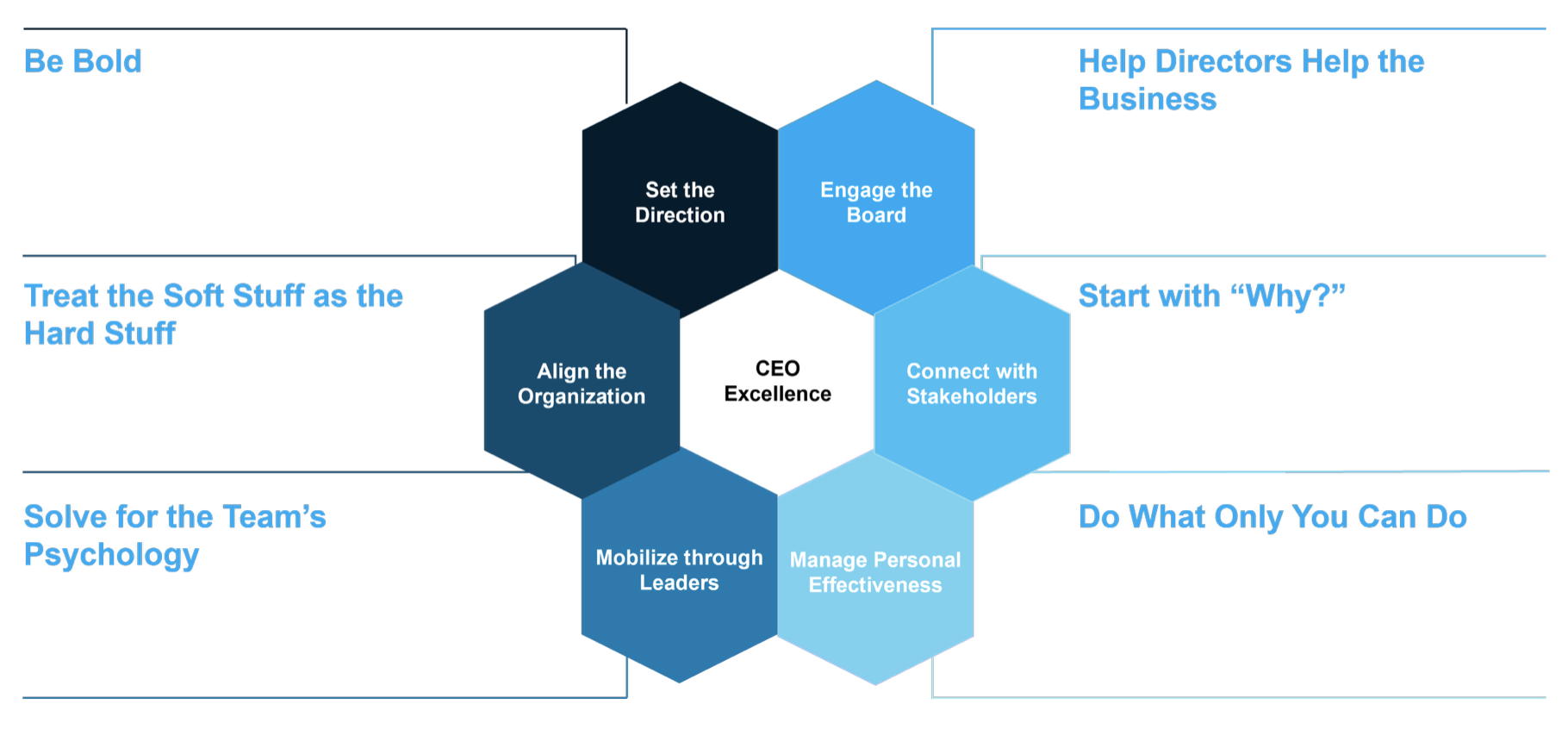
- Being bold: Uncertainty does not mean playing safe, which typically delivers mediocrity or decline. The best CEOs act boldly, smartly, seeking the best new opportunities. They raise ambition and aspirations. They become excellent futurists, enabling them to explore and choose the right vision. While they retain flexibility, they also have the resilience to stick with strategy. Focused on the mid to long-term, not to distracted by now.
- The soft stuff: Change generates resistance, and people and culture failure points of change. McKinsey found that companies who solve the soft issues are more than twice as likely (79% to 30%) to execute strategy successfully. Leaders engage people by making a clear and strong case for change, and retain focus on performance.
- Team psychology: Building high-performing leadership teams starts with roles, not people – what are the most important jobs, and then who can do them. Leaders design for overall functionality, bringing in a wide range of expertise. The often surround themselves with people better than themselves, in different areas, and give them the space to perform.
- Board role: “The board is the CEO’s boss, but an awkward one—lots of people, infrequently seen” says McKinsey. Trust is key, which means being open, honest and prompt about plans and problems. The best CEOs establish a strong relationship with the chairman or lead director and check in with other directors once or twice a year. They introduce the board to the company, by connecting them to managers. As Piyush Gupta, CEO of DBS says “the board, to me, is a partner, and they can talk to anyone in my management team. I believe the free flow of information is helpful for complete alignment.”
- Start with why: Purpose might sound simple, but is not easy to define. It should have the power to inspire people, simple to understand, and make sense. HBR found companies with a clear social purpose have significantly outperformed the S&P 500 over the past 20 years. The best CEOs ask themselves why their company exists, then make purpose an intrinsic part of the business model, knowing that testing strategy against purpose can open up new areas of growth.
- Do what only you can do: Being a CEO is a full time job. The best CEOs recognise the need for self-discipline, to manage themselves – their time, activity, and fitness. The best CEOs don’t have full schedules, but build in flexibility to think, engage and respond to unexpected. Many combine high-intensity and recovery periods – breaks, lunch, family.
My friends at PA Consulting have developed an excellent approach called positively different leadership.
They wanted to understand the behaviours driving the new approaches to leadership, so surveyed more than 300 business leaders across the US, UK and Europe. They found concrete ways of leading that make a tangible difference to the health and happiness of an organisation and wider society.
These four leadership behaviours, described in a new report, will be critical to success over the next five years:
- Nurture human optimism: Helping people have a positive mindset and approach, tapping into our innate capacity to adapt to new and complex situations with innovation and creativity.
- Empower teams to innovate: Inspiring people to understand their customers’ desires, and giving them the space and permission to imagine and deliver value- creating responses.
- Build evolving organisations: Creating environments where rapid change is the norm, and where aware, inclusive and responsive teams are able to make a success out of change.
- Seek inspiration in surprising places: Applying new perspectives and a broader lens to both existing technologies and evolving challenges.
PA then interpret these in five steps that can transform leadership behaviour, across your top team and throughout your organisation. They call it ingenious leadership:
- Work in the growth zone – for leaders looking for ways to keep up with the relentless pace of change, leaning into acceleration is part of the answer.
- Cultivate kindness – empower your people to try new things, take risks, and to do so safe in the knowledge that they won’t be targeted as a result.
- Catalyse your internal disruptors – give more share of voice to the disruptors in your organisation, encouraging diversity in all forms to drive new thinking and being.
- Make authenticity everything – harness the power of purpose to move from platitudes to plausibility, inspiring all stakeholders along the way
- Create and embrace liminal spaces – shape new ways for people to connect, fostering a mindset that is comfortable with ambiguity.
Emirates is one of the world’s largest airlines, operating over 3,600 flights per week from its hub in Dubai, UAE. It operates to more than 150 cities in 80 countries across 6 continents through its fleet of nearly 300 aircraft. “Be good to yourself and fly Emirates” says its tagline, and the inflight experience is certainly one of the best in the world.
Emirates Flight Catering is one of the world’s largest catering operations. Not just serving its parent company, Emirates, it is also a catering partner of over 100 airline customers, hospitality groups and UAE government entities. Each day, the catering company’s 11,000 employees prepare an average of 200,000 meals.
The challenge however, is to source a huge amount of fresh food, while in the middle of the Arabian desert.
Indoor, vertical farming emerged as the answer, and in 2022, the catering business got together with Crop One, an industry leader in technology-driven vertical farming. Together they created Emirates Crop One (ECO 1), the world’s largest vertical farm.
Located in Dubai, near Al Maktoum International Airport, the 330,000-square-foot facility, which spans 175 yards in length, will produce over 2 million pounds of high-quality leafy greens each year.
“We are proud to bring Crop One’s best-in-class technology to this innovative food production facility alongside our joint venture partner. ECO 1 will address growing supply chain challenges and food security issues, while introducing millions of new consumers to the benefits of vertically farmed produce,” said Craig Ratajczyk, Chief Executive Officer at Crop One.
“It’s our mission to cultivate a sustainable future to meet global demand for fresh, local food, and this new farm is the manifestation of that commitment. This new facility serves as a model for what’s possible around the globe.”
The hydroponic facility is designed for continuous output of leafy green crops that are exceedingly clean and require no pre-washing, always grown without pesticides, herbicides or chemicals.
Powered by Crop One’s Plants-First™ technology and infrastructure, the farm utilizes machine learning, artificial intelligence and data analytics, and is managed by a specialized in-house team of engineers, computer and plant scientists.
ECO 1 uses 95% less water than field-grown produce while guaranteeing an output of three tons per day.
Passengers on Emirates and other airlines can enjoy the lettuces, arugula, mixed salad greens, and spinach, onboard. Local UAE consumers can also find the produce on store shelves under the Bustanica brand.
ECO 1 is Crop One’s second farm, following its Millis headquarters, near Boston USA, which was launched in 2015.
I’ve been writing books for the last 18 years.
In that time nothing much has changed in the publishing industry. Indeed I remember back to 2002 when I first met Mark Allin, founder of Capstone, who had just founded his business. He was determined to break the mould, and in some ways he did – with early books like The Cluetrain Manifesto (with a funky FT imprint), and Exec Express (a series of over 50 rminibooks, which we curated for a corporate). But then he sold his baby to Wiley, and despite following to become global CEO, his ideas were gradually lost. Eventually he left Wiley, frustrated by their unwillingness to go beyond convention.
10 books later (writing about strategy, innovation, leadership and brands – ironically!), I am more frustrated than ever by book publishers. They seem to have regressed to ever more unimaginative standardisation and conventionalism – the 300 page hardback, in Times Roman font, stripped of any visuality, let alone innovation. Anything to reduce costs, and it seems, put off the reader. Manuscript to market still takes 9-12 months, typically with outsourced editing and typesetting of a poor standard, lacking any ownership or added value. Books are printed, often mass printed in Asia, shipped to Europe, stockpiled in remote warehouses, then shipped back again on demand. Usually too late due to antiquated sales and delivery processes. And often delivered incorrectly.
8 years ago, I teamed up with Joerg Engelstadter, a Canon print executive, who shared a passion to make books better. We created the “Future Book Forum“, and we’ve held it every year in Munich since, attracting around 2000 publishers every year, each year focusing on how to reimagine and reinvent aspects of the book process. It’s generated thousands of ideas, with lots of inspiration, but no real industry-changing action. Until now.
At the FBF22, we focused on sustainable innovation, and also brought together many of the industry groups, from the IPA and EPA to the UN Publishing Compact, and founded the “Publishing 2030 Accelerator” an initiative to catalyse and facilitate cross-industry change. The accelerator is coordinated by Rachel Martin from Elsevier, but with a broad team of industry experts and stakeholders – including Richard Charkin, Michiel Kolman, Jesús Badenes, Dalia Ibrahim, Peter Kraus vom Cleff, Karina Pansa and myself.
In particular it seeks to practically address some of the big problems – unsustainable manufacturing to over-produced waste, inefficient selling to technological aversion. And also to promote the positive opportunities – the power of the book, the written word, to inspire, and educate, and enable.
Future Book Manifesto
As a starting point, we got together to write a manifesto for change. A manifesto that everyone in the industry will hopefully align with, and engage in as a platform for action:
To everyone who believes in the power of the written word,
We believe it is the role of the publishing ecosystem to put sustainability at the heart of our business and operations to ensure that the book, in all of its forms, continues to drive progress towards a sustainable future for both people and planet.
- It is time to take responsibility for the world we create. The book has the power to educate, entertain, promote culture, and stimulate diversity and democracy. We must work to reduce any negative impacts specifically, with regard to the resources, energy, transportation and waste associated with the production and distribution of books.
- We can be drivers of change, putting a sustainability-led purpose at the heart of our organizations and the “smart” innovations we develop for the future. Let us join forces to empower the wider sector to act and challenge the established thinking and processes that often impede progress. Our passion is to transform ideas into reality, to help both our own organizations, and the wider sector, achieve the success which can make a positive impact for people and the planet.
- We shall accelerate action, the time to talk is over. The technology needed to address sustainability is already within our reach. Forget about perfect. The United Nations has called for action on sustainability and a need for an avalanche of action. Let’s build a community of like-minded people to test our powerful ideas and assumptions. We will transform what we consider is “standard” in our industry.
- Let us move forward together, becoming members of the accelerator we recognize we must use our knowledge, passion, and resources to leave no one behind in our sector on our shared mission. We love experimenting and are willing to try new things. We will deliver simple solutions and inspiration that will leave our planet and society in good hands for the future generations.
We who have signed this letter will hold each other accountable for putting these ideas into practice. The stakes are high, the future depends on our connections and the things we create together.
I’ve been running since I was 10 years old. I got started on lunchtime runs with a small group of school friends, led by teacher Mike Henry. We’d run from the Middle School in Rothbury to Carterside farm and back. I still occasionally run on that course now, part of much longer runs when visiting family, but in those days it seemed like a marathon.
My dad had been a good runner in his day and was a huge inspiration, and throughout my school years, he would faithfully take me to Morpeth Harriers training nights, and then to races around the North East of England every weekend. My favourites included the Gateshead Cross Country Races and Tyneside Track Leagues – and then further afield to regional and national championships.
Over the years, I’ve been lucky to run at a good standard – schools champion at 800m and 1500m, and when 16, I was UK Northern Champion too. I ran the first Great North Run from Newcastle to South Shields in 1981 as a 13 year old (91 mins). Now it’s the world’s largest mass participation race, still organised by local hero Brendan Foster and his team, and I’ve run it many times since (sub 70 a couple of times, but I’m getting slower now).
While I was never good enough to make a career out of running, the years of hard training, the buzz of racing, and persistence in searching for my peak performance has definitely helped me in life. I remember rubbing shoulders with world record holder Steve Cram in races, and always beat David Sharpe who later became a world champion. Other training partners like Mark Hudspith at Morpeth and Dan Rathbone at Uni went on to compete internationally, and even win global medals. More inspiration.
45 years on, I’m still getting out there – kicking on my Nike trainers, for a morning 10km wherever I am in the world. My work takes me to so many different countries, almost every week, and there’s always space for my kit in my hand luggage. It means that every trip is an adventure. Once you’ve clocked up your morning run, you’re on a high for the rest of the day.
I’d say that running has made me better in many ways – in particular the determination, resilience and persistence, to always seek better in every aspect of work. Life is a marathon not a sprint, and I’m definitely a long distance runner. Writing 10 business books has taken a lot of self-motivation, the same drive that gets me out for those early morning training runs, particularly in rain and snow. And every time I walk onto stage, I still get that adrenalin surge, like at the start of a race, the catalyst to perform to the best of my ability.
So here, for a bit of fun, are some of my favourite running routes around the world:
Athens, Greece

Athens is an amazing historic city for a morning run. I normally stay at the Intercontinental, which is only a 10 minutes run from the fantastic Panatheneic Stadium, the original Olympic venue made from huge granite blocks. You can have a quick sprint around the track too (600 Greek feet, or 178m, compared to the conventional 400m today). From there I usually head up the Lycabettus Hill for a breath-taking, quadricep-screaming view, and then back down through the city, past the Temple of Zeus, and up Phillopapou Hill – from where you get the best view of the Acropolis, with the iconic Parthenon and its Temple of Nike.
Boston, USA
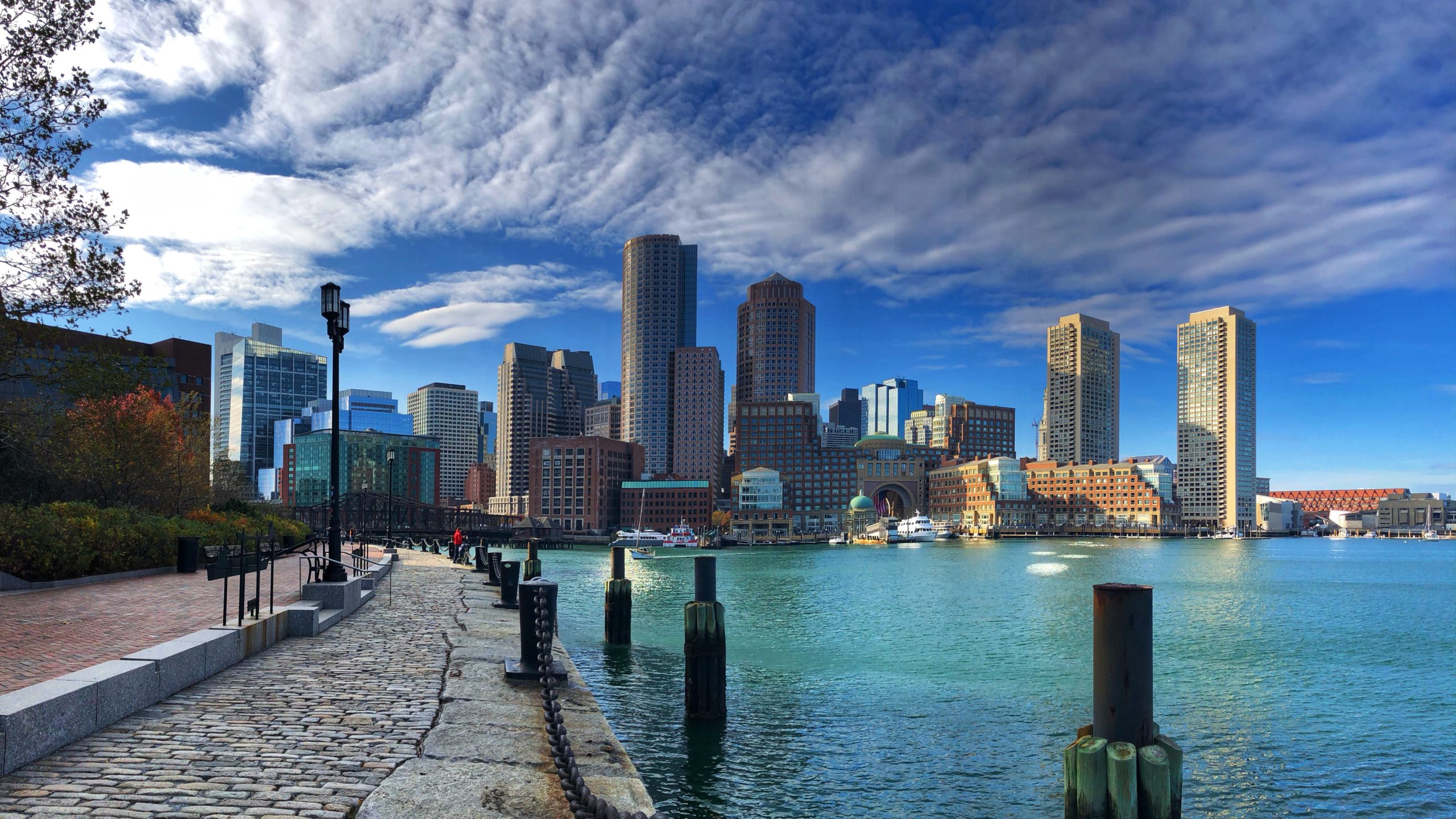
There’s a beautiful running route around Boston Harbor. Again, I usually start out from the Intercontinental, next to the Boston Tea Party ships, and then follow the pathway around the many inlets to Bunker Hill. It’s an out and back course, so you can always challenge yourself to run faster on the way back then you did going out. Early morning is the time to run, as the pathway gets busy with tourists and workers, which just isn’t good for a fast runner. Boston is one of the world’s great running cities, and there are so many people out early. You can also go find the finish line of the Boston Marathon on Boylston Street near Copley Square, run the last mile, and imagine that epic race between Beardsley and Salazar.
Bushy Park, England

This is home. But also the local training route of 4 times Olympic Champion Mo Farah, and most of the best Kenyan athletes who often base themselves in the town. Actually I moved to Teddington when I started working, because I knew it from the Sweatshop, a famed running store, which used to be located at Teddington Lock. This is where “parkrun”, the free 5km runs for everyone, every week, started back in 2004. Now there are weekly parkruns in 775 locations in 30 countries, with over 3 million participants, although the biggest is still in Bushy Park. There’s a fabulous network of trails in the park, including the outer 7 mile loop which I save for time trials, and woodland gardens which are great for morning runs. Less busy is the adjacent Home Park where you can run along the side of the impressive Hampton Court Palace. Both parks used to the private hunting ground of King Henry VIII of England, and are full of wild deer, so you sometimes need to give them a wide berth.
Caer Caradoc, England
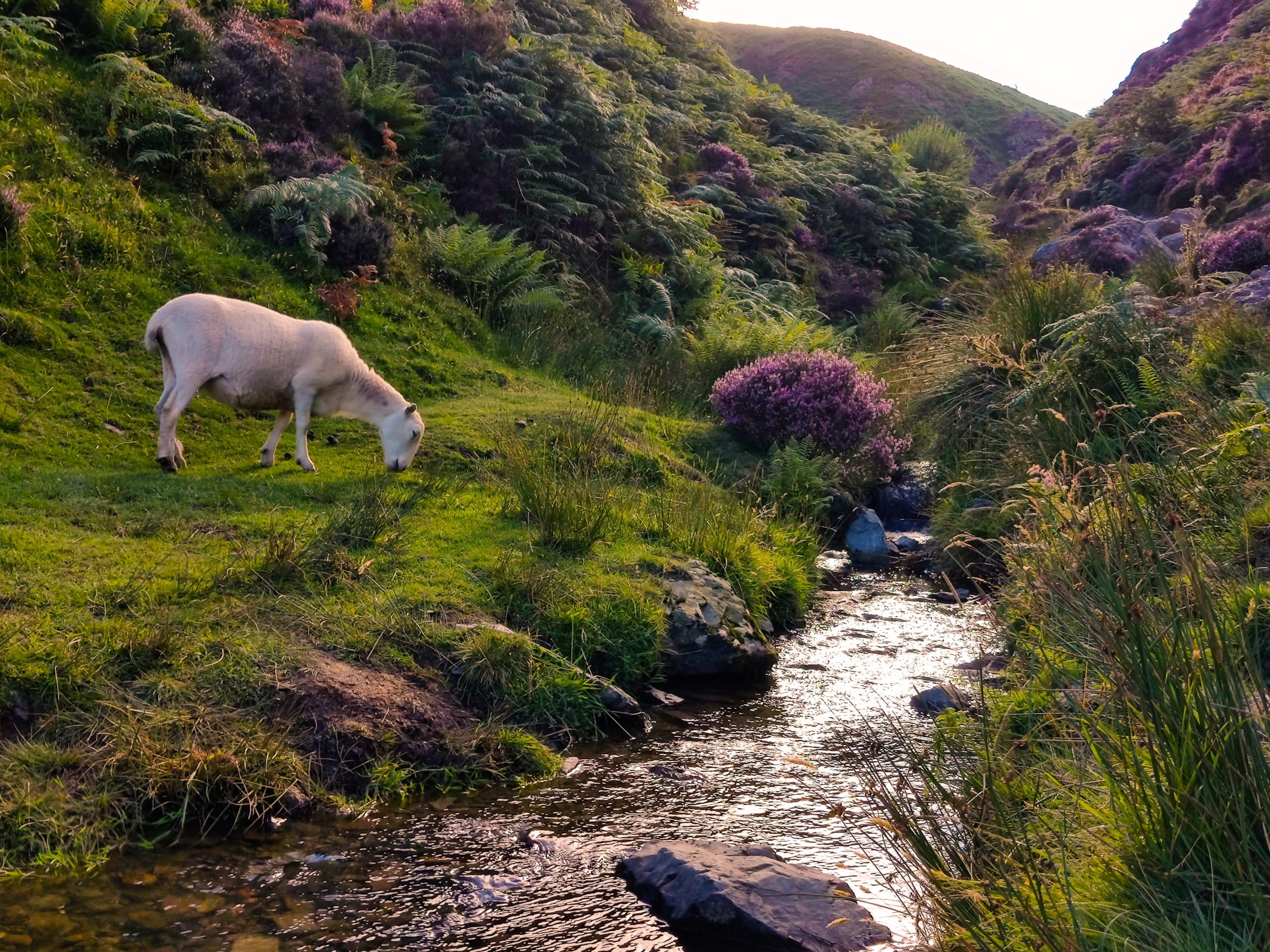
15 years ago we bought a small house in Church Stretton, a small village in the heart of rural Shropshire – because of its beautiful surrounding countryside, not least the tough hills to run up, across and down. The Long Mynd has many routes, but my favourite challenge is up the imposing Caer Caradoc, which has a Bronze Age hillfort on top, and then add in a few more hills – Hope Bowdler, the Gaerstones, and the Ragleth. From the top of Caradoc the view is spectacular – Britain’s highest peak, Snowdon, lies to the west, while you can also see Chester to the north, and Ludlow to the south.
Cascais, Portugal
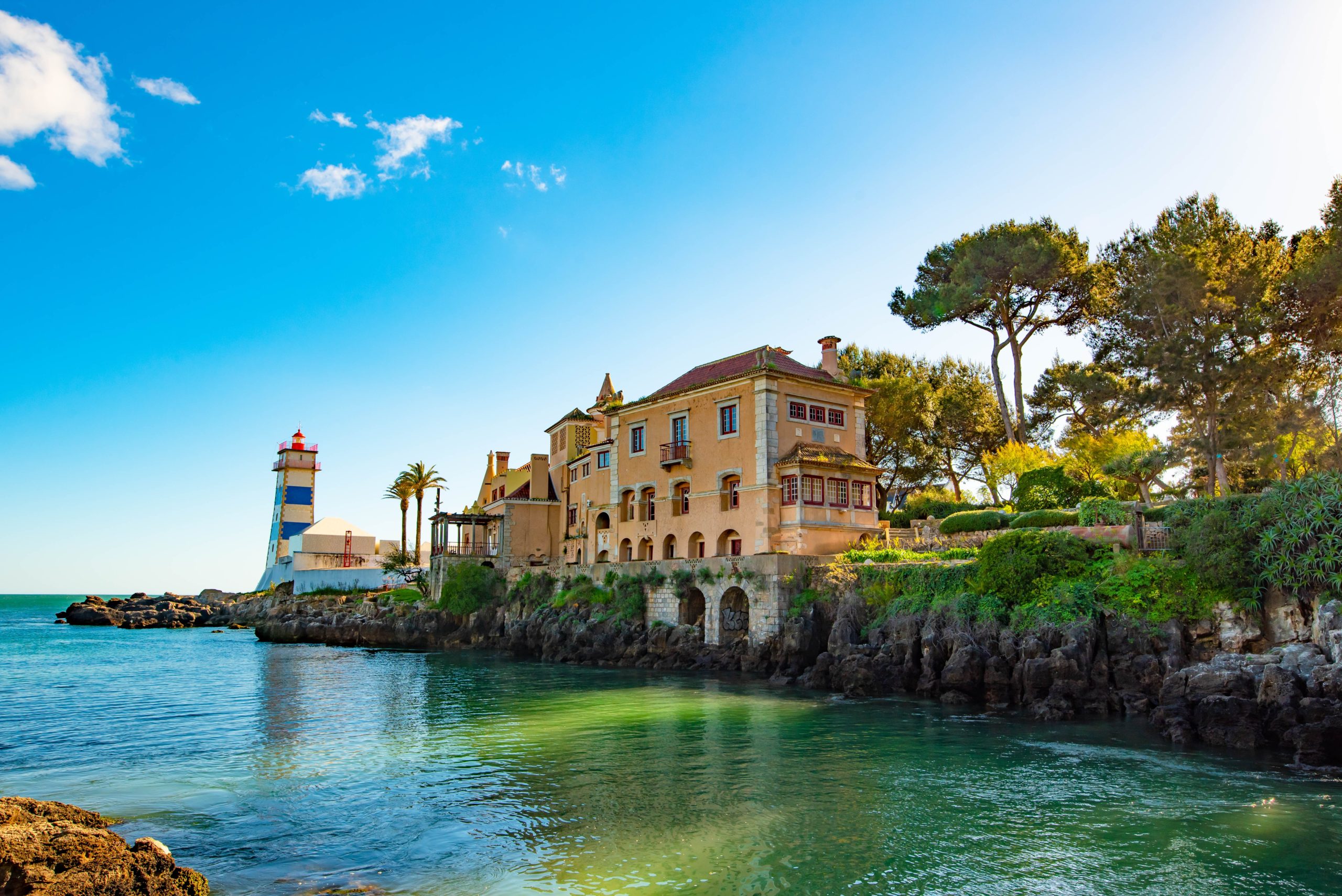
Just along the coast from Lisbon, actually a fantastic train ride, is the beautiful seaside town of Cascais. The seafront runs are breathtaking, often with the sea often whipping up to splash over the coastal path. Through the small town, cobbled streets and fish restaurants, and out the other side, you are quickly onto a rugged cliff coastal route, the Atlantic Ocean down below is famed for its surfing. Most recently I was here doing a keynote speech for the Sports Business conference, and so naturally started with a retelling of my morning’s 10km.
Central Park, New York, USA
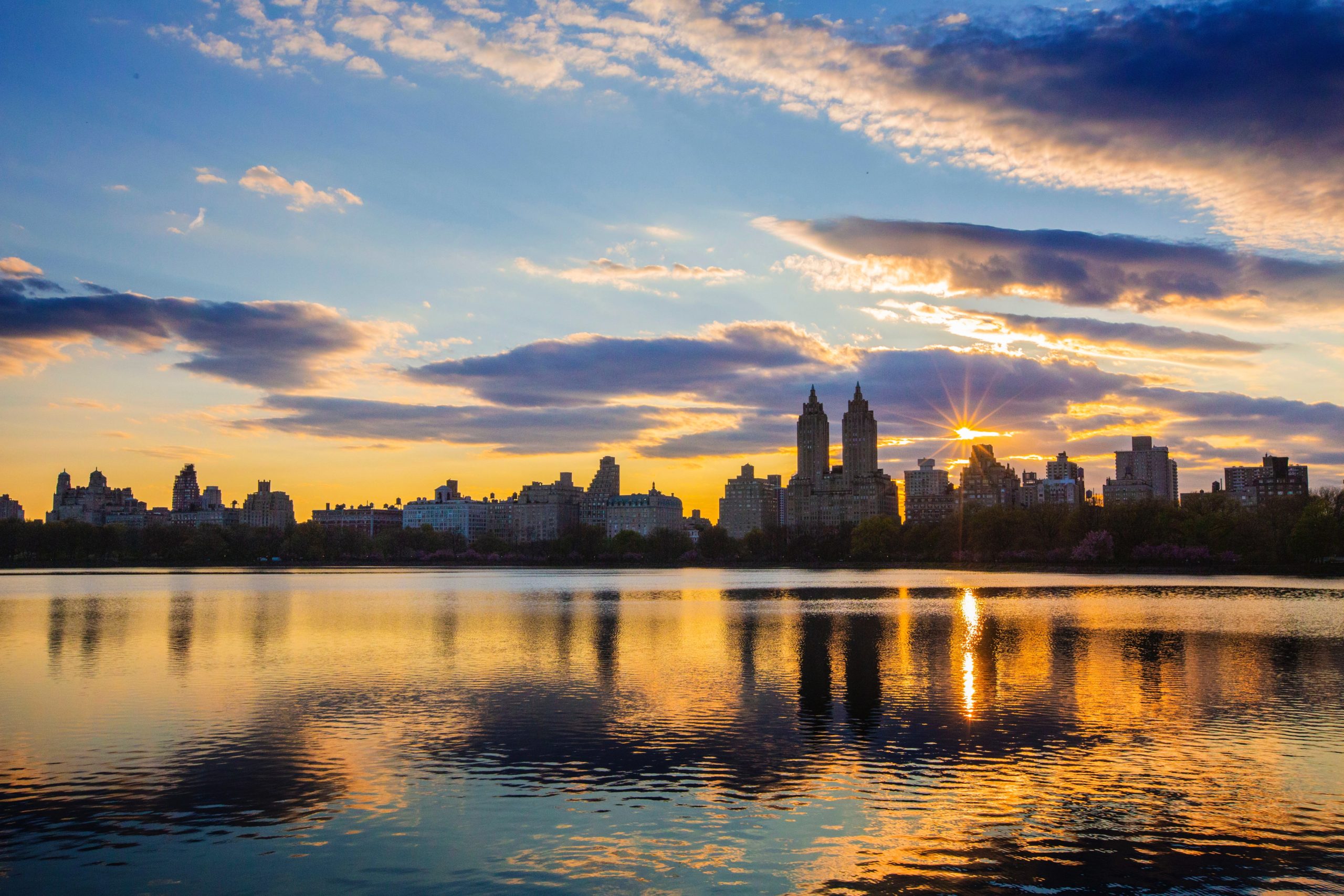
Nothing beats an early morning run in Central Park, particularly on those cool mornings where there is a layer of mist, and then sun breaking through. But you need to get there early. Usually, having flown in from Europe, my body clock is ready to run by 5am, perfect time, although the city streets up to the park are already busy at that time. Later the park is more like a running highway, with cyclists too. Up past the zoo and behind the Met, a loop of the reservoir is always my goal, from where you get amazing views of the Manhattan skyline. You can also run the last mile of the NYC Marathon, and realise how hilly it is.
Freiburg, Germany

One of my university towns back in the late eighties. Living on the bank of the River Breisgau, I was straight onto the riverside path heading west towards Breisach and then onwards to the French border, or east towards Kirchzarten and Titisee. Beyond the river, the lovely cobbled German town is surrounded by the Black Forest, with endless running tracks through the trees and nearby vineyards. At that point in my life, I was researching high temperature superconductivity in a research lab, so it was great to escape from the underground lab into the fresh Black Forest air (and then a glass of Baden wine) at the end of each day.
Grand Canyon, USA

Arizona is an amazing state. In the south, around Tucson, you can head off into the outback with only the most amazing cacti and geckos for company. Driving north from Phoenix you are quickly into the red rocks of Sedona, stunning, particularly at sunset. And then to the canyonlands. Staying in a National Park wooden lodge means you can be up at sunrise, and immediately running along the edge of the canyon. Breathtaking, a little scary too. In winter, you get the whiteness of early morning frosts and temperature inversions, before it is burnt off by the sun.
Hatta, UAE

I didn’t expect to find mountains in the middle of the desert. Drive 2 hours east from Dubai in the United Arab Emirates, and you suddenly find yourself climbing out of the flat sands, and up into the cool rocky mountains of Hatta. Many locals come here in the heat of summer to stay cool. It’s also a great place to organise my week-long executive retreats. And to venture out each morning into the surreal moonscape surroundings.
Hyannisport, USA

Cape Cod has been our family summer holiday destination for the last decade, our children loving the wooden beach houses, endless sand, and relaxed vibe. We usually stay in Hyannisport, which is a quiet hamlet just outside Hyannis, most famous for JFK’s summer house. As I hit the beach road each morning along to Squaw Island and back, I often passed some of the Kennedy clan. Maria Shriver gave me a big high five one morning, and I even sweatily passed Taylor Swift with her then boyfriend on another day. With no work to do in the summer holidays, running becomes the highlight of the day, a time to really put in some miles, to get properly fit again, and enjoy the beautiful sun and sea.
Jūrmala, Latvia

Jūrmala beach is just outside Riga, capital of Latvia. The sand is beautiful, and the nearby forests perfect for running and getting lost. The town itself is a long road of wooden, art nouveau seaside villas and Soviet-era sanatoriums. I’ve visited the Baltics many times – also with great running routes around Kaunas, Klaipeda, Tallinn, Rezekne and Vilnius – but the Latvian people are incredibly friendly, and the countryside beautiful.
Lausanne, Switzerland
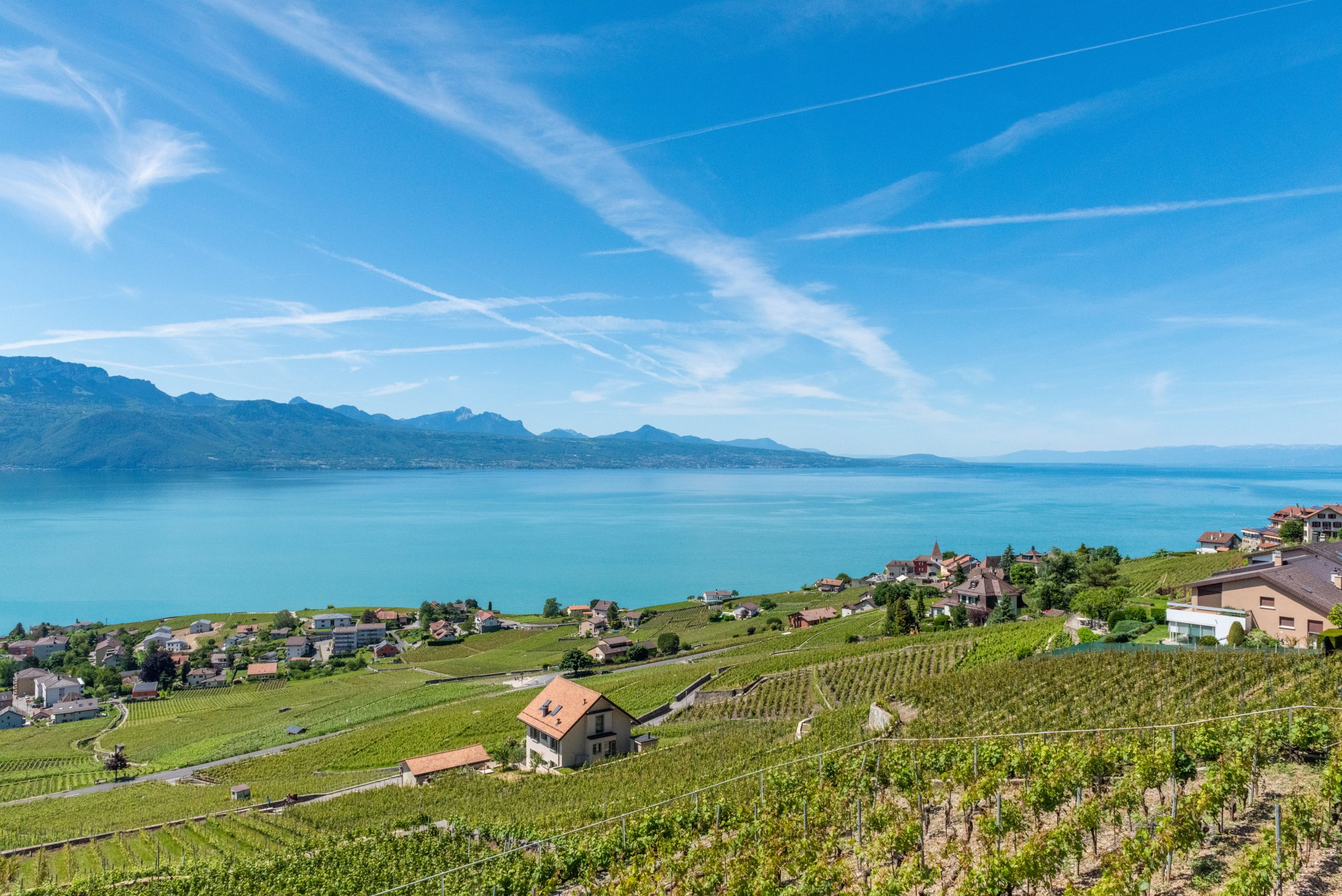
Switzerland is a magical place to run, the paths around the lake are typically wooded, and flat. Look up and you are surrounded by towering mountain peaks. Even in the middle of summer, the snow caps are clearly visible. I’ve lived and worked in the country, and there is a fabulous network of mountain races, if you want a quick burst of quad-screaming pain! Lausanne, home to IMD Business School, is one of my favourite places to run, and work. Geneva is a regular location, home to many luxury brands, from cosmetics to watchmaking. Interlaken, venue for the annual XDays conference organised by NZZ, is spectacular too!
Long Island, USA
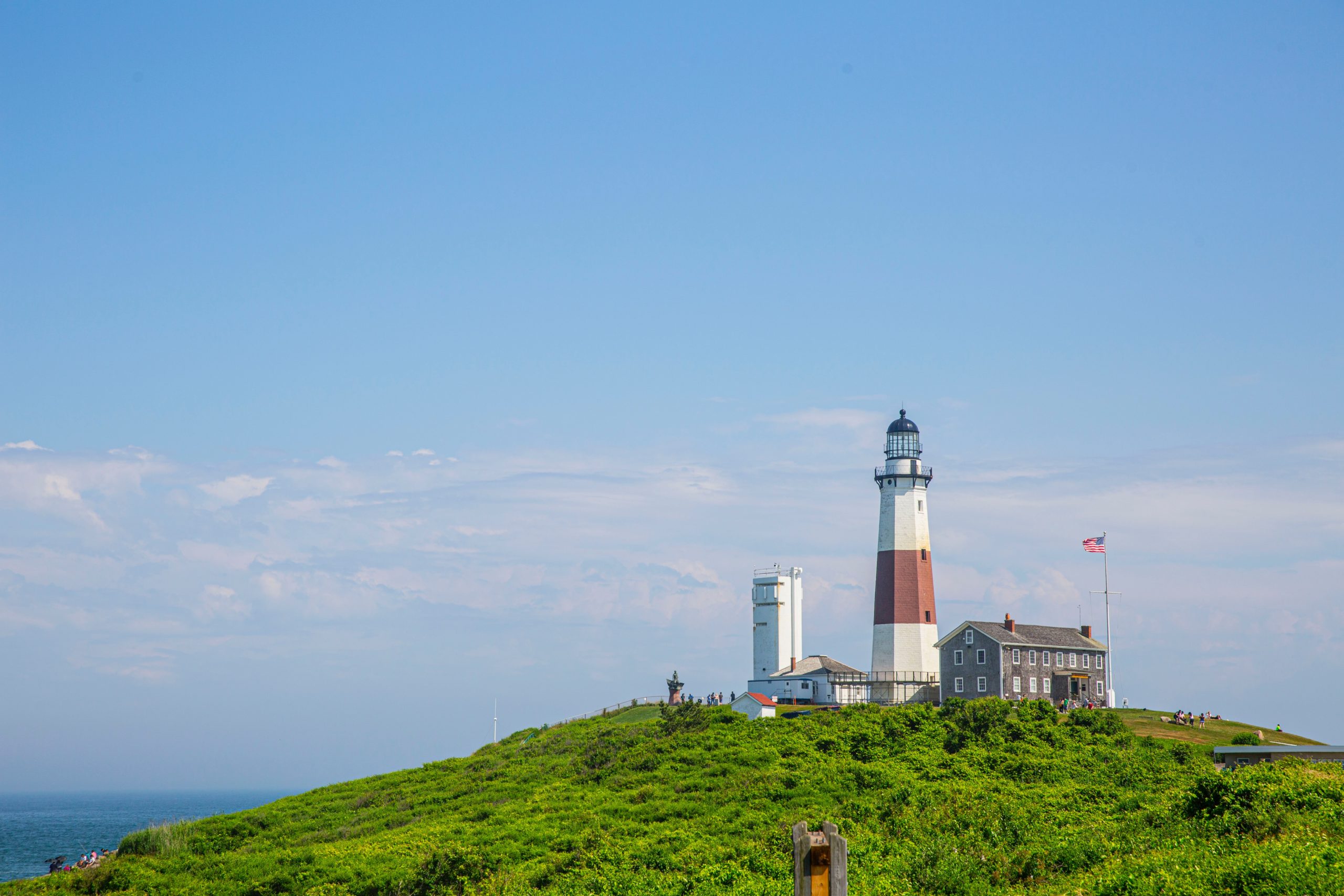
Turn right out of New York’s JFK airport, and instead of Manhattan, you are quickly in rural Long Island. I never quite realised how big the island was, until I started driving eastwards. Passed the rock star homes of the Hamptons, I headed north to Aquabogue, on the North Fork. Sitting on the dockside I could look across to Puff Daddy’s pad. But running from he, I was quickly into rural wine country – passing some amazing vineyards like Raphael and others. It’s amazing how quickly the tower blocks of Manhattan give way to countryside, while still officially in New York City!
Munich, Germany
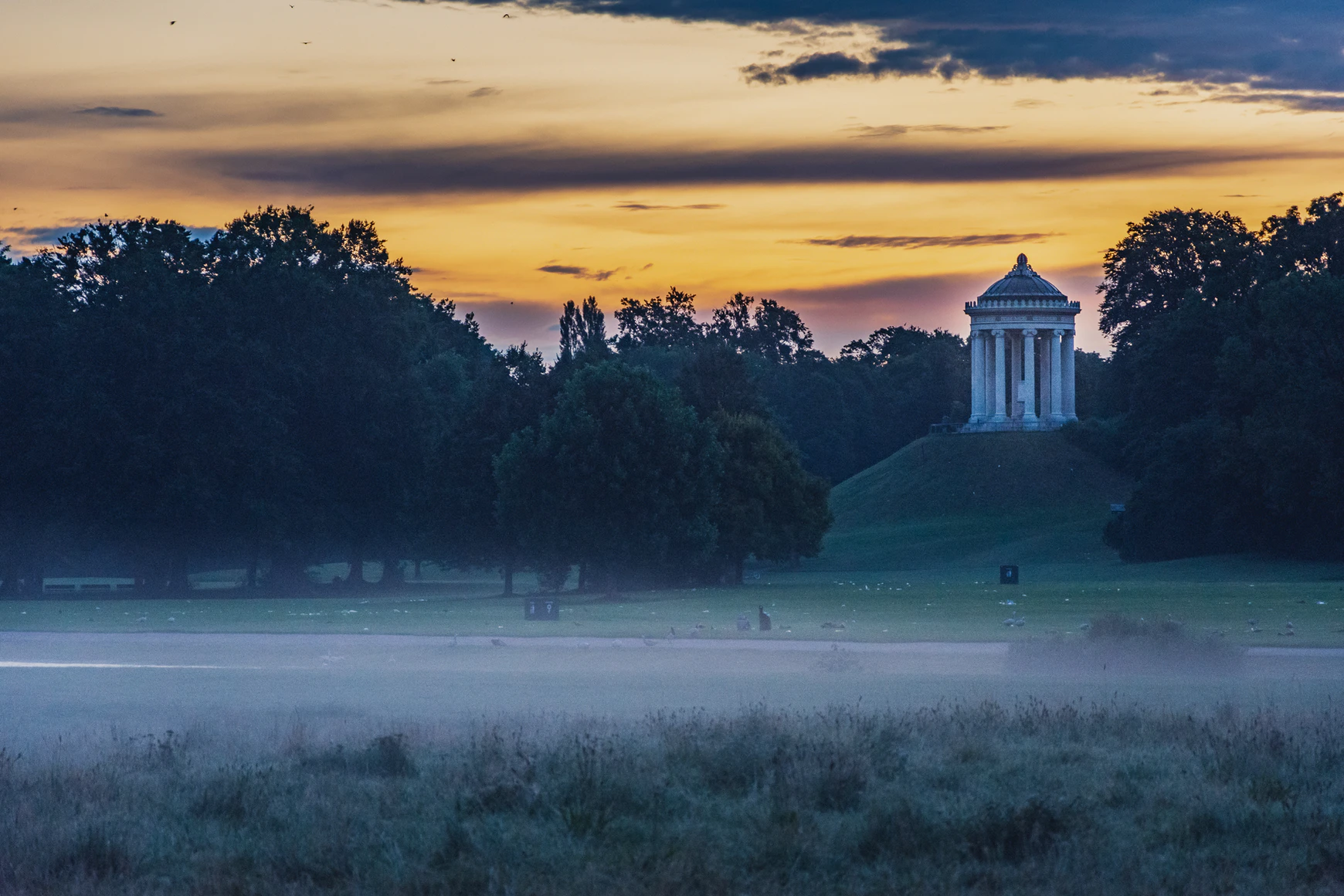
For the last 10 years I’ve been hosting the Future Book Forum each year in Munich. Which means, the Englischer Garten has become a regular running venue. You can run for hours along the riverside and through the huge parkland area, where you frequently come across a Hofbrauhaus or Biergarten. No time to stop though. Like most German cities, locals all get around on bikes, so the city streets or riverside paths can be quite a challenge on two feet.
Northumberland Coast, England
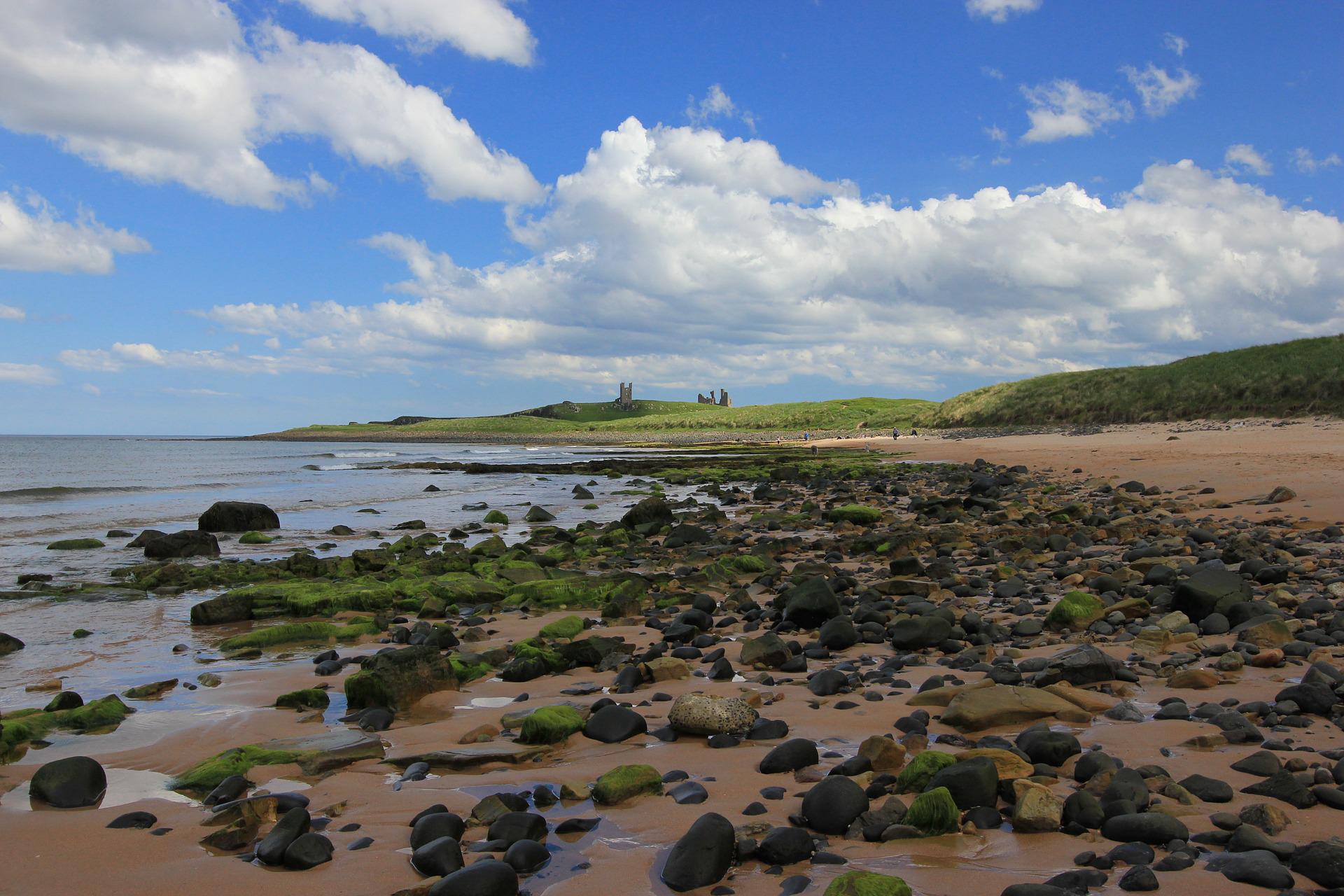
This is actually the route of the annual 14 mile Coastal Run organised by Alnwick Harriers, but also a great run to enjoy any or every day of the year. Starting out just south of the mighty Bamburgh Castle, in the small fishing village of Beadnall, you can choose your own route down the coast, following the beach paths or nearby roads. One of my favourite moments was leading a field of almost 1000 runners along the deserted Embleton Bay to the beautiful Dunstanburgh Castle with its iconic tumbling towers. Fuelled by the smell of smoking kippers in Craster, you eventually arrive at Alnmouth, and the River Coquet.
Odense, Denmark
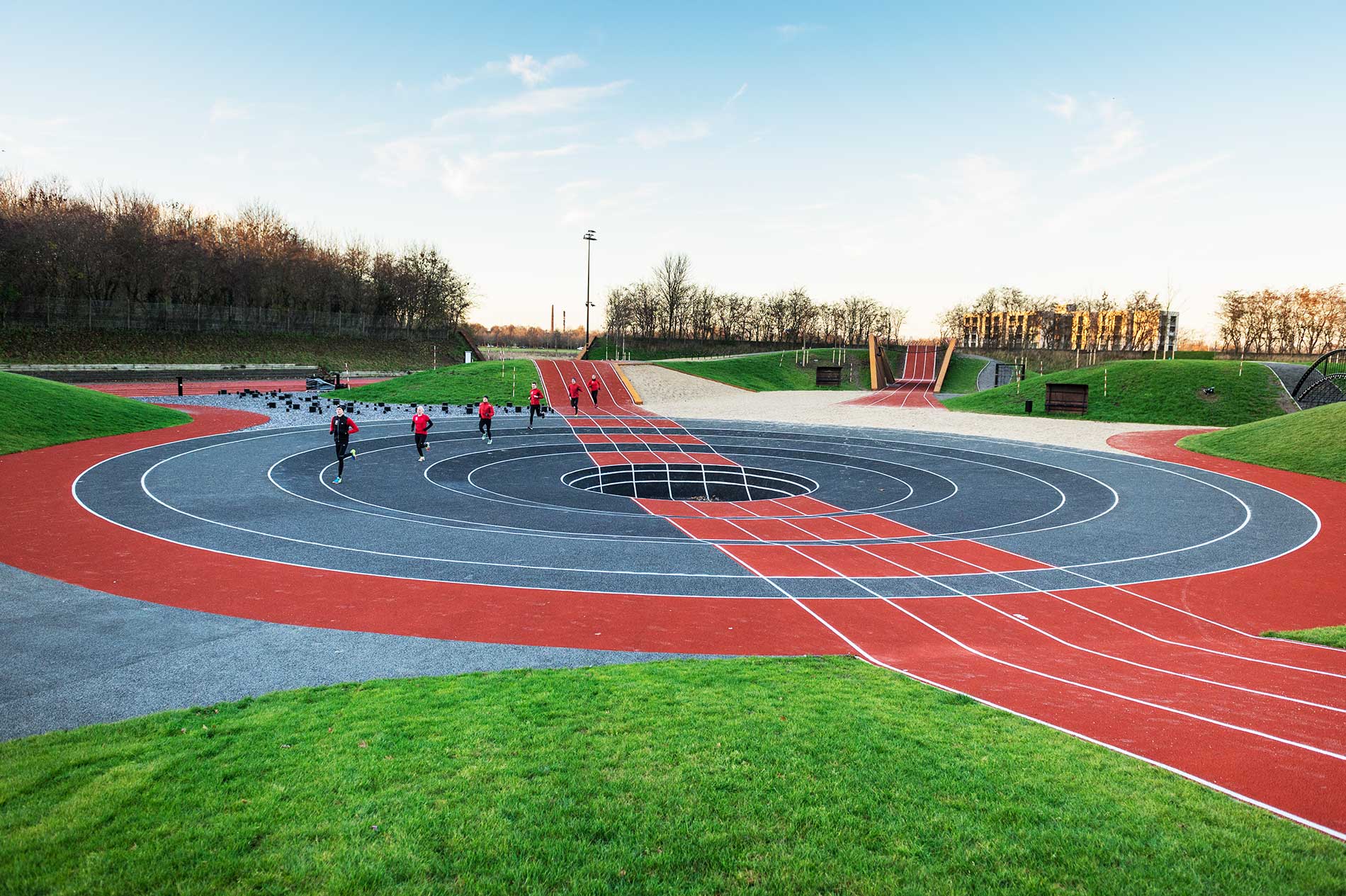
The small Danish city of Odense, named after the Norse god Odin, has become another annual venue, where I have hosted the European Business Forum for a number of years. We’ve brought some of the world’s top business gurus to this small city, which is actually a hotspot for robotics and drones. People like Alex Osterwalder, Michael Porter, Whitney Johnson, Roger Martin, Rita McGrath, have all been here. Out running with fellow director of Thinkers50 Stuart Crainer one morning, we were amazed to find the Athletics Exploratorium at the SDU campus, a crazy athletics track with artificial hills and obstacles. It was voted one of the world’s most innovative running facilities by World Athletics, and is also a test site for exoskeletons and robots.
Oslo, Norway
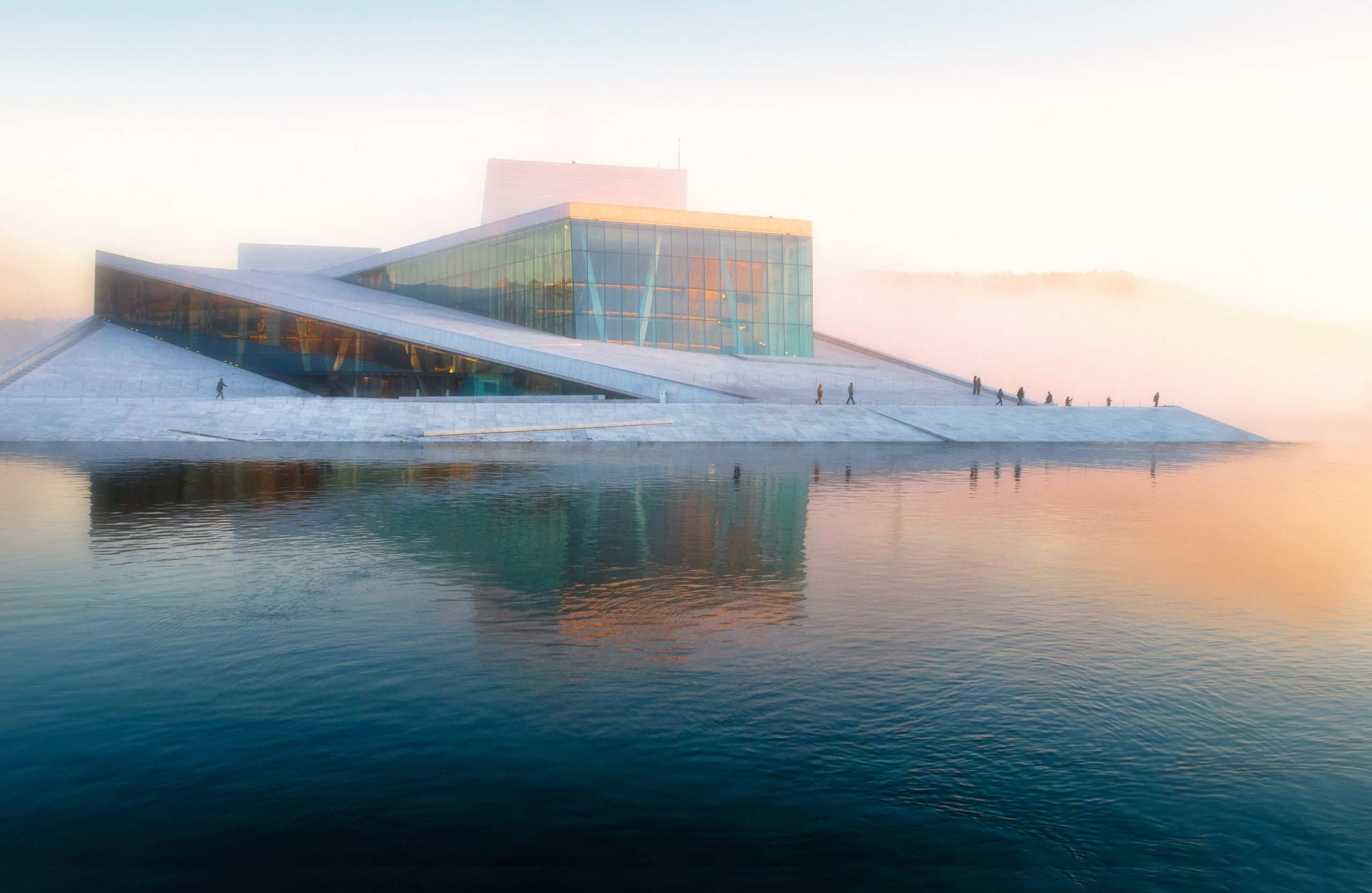
For runners, Oslo is most famous for the Bislett Stadium, venue of one of the world’s best Diamond League athletic meetings. Since the early eighties I’ve eagerly watched the Dream Mile each year, with world records by the likes of Coe, Ovett and Cram. The small city is easy to explore on a run. I particularly love the waterfront, where you can run for miles enjoying the fjord air. The stunning new Opera House is a particular landmark, and seems to fuse with the water and sky in the early morning mist.
Redmond, Seattle, USA
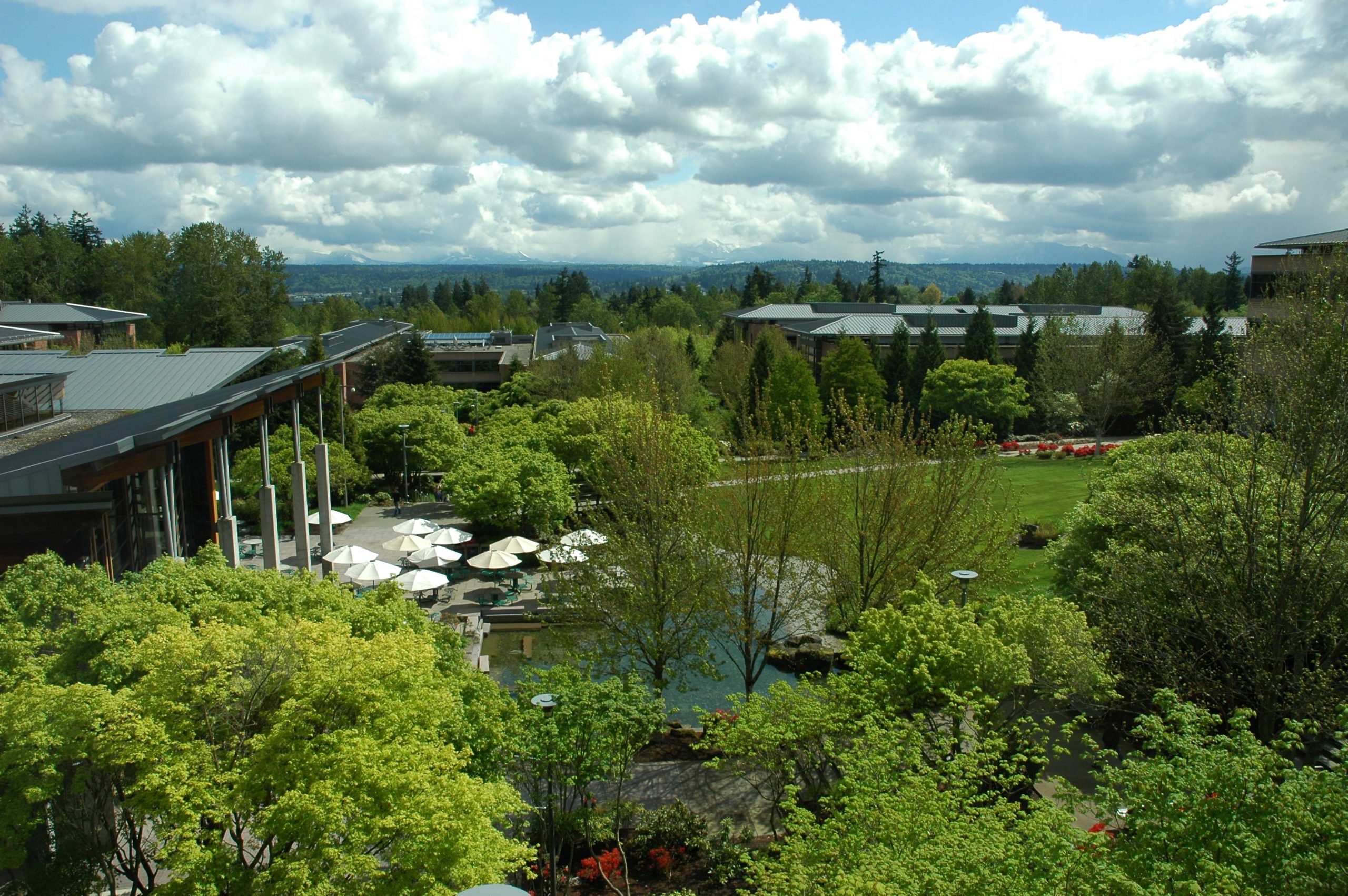
Microsoft’s huge sprawling campus dominates Redmond, which is effectively a suburb of Seattle. It’s been great to work with the $2 trillion business over recent years, but I’d never got to see the whole campus. One morning, jet lagged I was up at dawn, and spent 90 mins explored every part of the campus – including the building where Bill Gates and Paul Allen first set up the business. The deserted leafy roads are great to run on in the early morning, as is a a run downhill to Lake Sammamish and back.
Retiro Park, Madrid, Spain

As a professor at IE Business School, based in the heart of Madrid, I spend many days in the Spanish capital. El Retiro is a green oasis in the heart of the city, and loved by runners throughout the day. While the locals and tourists boat on the lake in the centre, the perimeter path is pounded by huge numbers of runners. Early evening is particularly busy time, more like a running track, as you keep focused on catching and passing the runners in front. Sometimes I do the 3 mile loop twice, but there’s still the mile-long trek back up Serrano to the Melia hotel, passed all the best stores, when I’m on my last legs.
Rothbury, England

This is where I grew up. My childhood memories are full of endless running on the moors above Rothbury in Northumberland. Around the carriageway of bilberry hill, onto Debdon and Cragside woods. Every morning before school, and evening, I’d be out there. Through the bracken and heather, the skyline of Simonside and Cheviot to the south and north. These days, I get back 2-3 times a year, and always try to squeeze in as many runs as possible. I also love the Simonside loop, over Garleigh and Lordenshaws, and back across the valley.
Rome, Italy

Running really is the best way to see a city. Setting off from Via Guilia, I’m quickly running alongside the River Tiber, past the Castel Sant’Angelo and then down to the Circus Maximus. This is a great place to run laps, imagining the history of the place, centurions and gladiators who commanded the same space.
San Francisco, USA
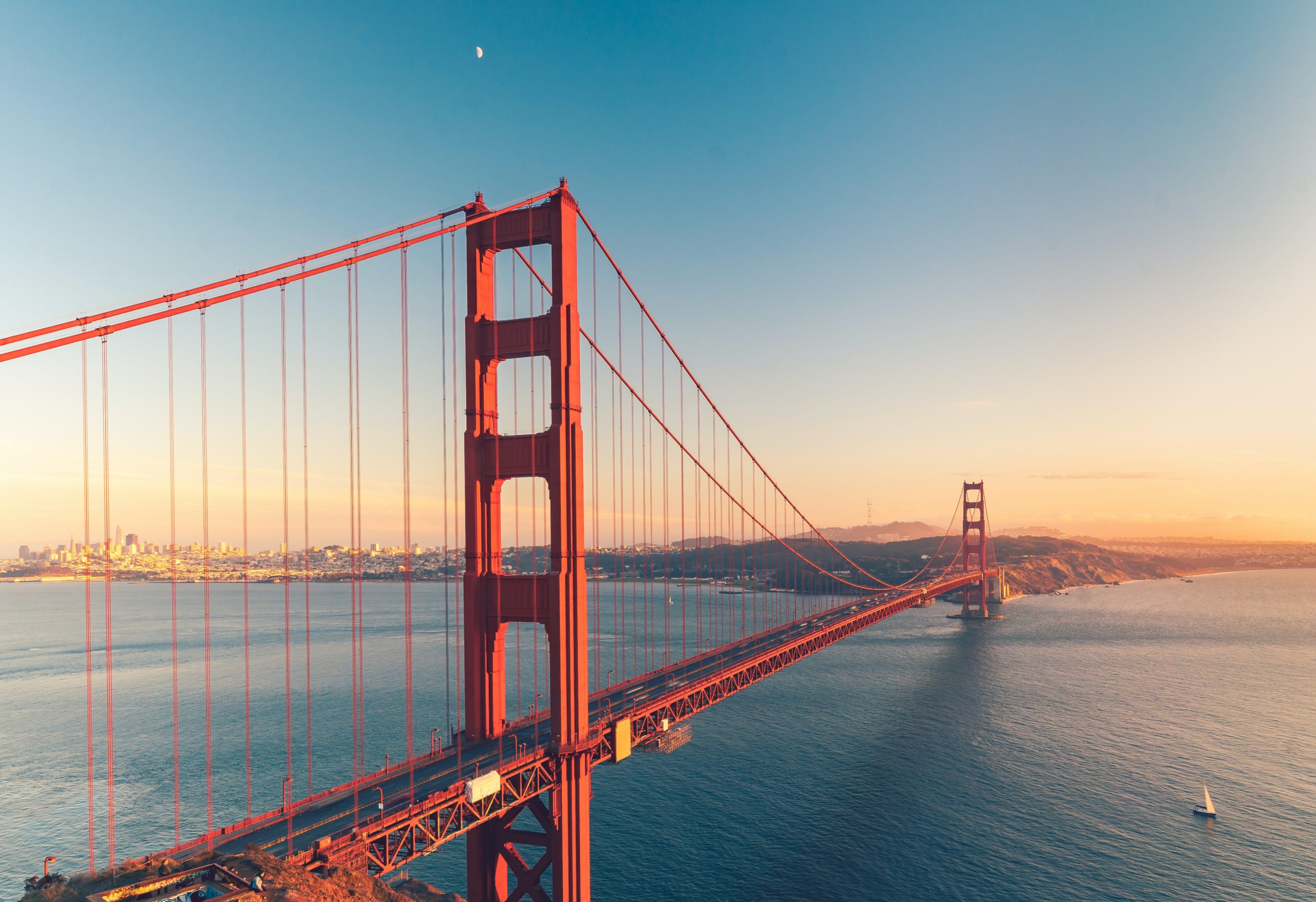
Golden Gate Park is where I met my wife almost 30 years go. In a running race, of course. I ran well that day, and even better were the prizes, miniature SFO street cars, which wound up to “I lost my heart in San Francisco”. I gave my future wide one of those cars on our wedding day a few years after first meeting. An even better place for running is out of the city and along the water’s edge of the Presidio to Golden Gate Bridge. Of course, you’ve got to cross it, and then back again. Long run but spectacular, and also the course of one of the world’s great running events, the Bay to Breakers.
Segovia, Spain

Segovia is a fabulous historic city 90 mins drive north of Madrid. I remember the first time I visited, I got up at 5am to catch the sunrise over the incredible Roman aqueduct with over 160 arches, built with mortarless granite. Run along the water channel as it leads out of the city and marvel at its engineering. Then head back into the centre, winding through the narrow streets to the royal palace and Gothic cathedral. Best of all I love the 10km trail on the hills circling the city, running past endless old churches and monasteries, with breathtaking views of the city perched on its rocky hilltop. These days I get to spend a number of weeks in Segovia each year, the perfect place for an executive retreat or strategic workshop. IE Business School has converted the 13th century Monastery of Santa Cruz la Real into a beautiful fusion of old and new. You can even work in the same room where Isabella I, Queen of Spain, received Christopher Columbus and agreed to finance his 1492 voyage to explore the New World.
Stockholm, Sweden
Stockholm is a small city, surrounded by water, but the best place to run is the nearby island of Djurgarden. You’re immediately alone, running along the waterside in Swedish countryside. Actually, the island is also home to an extremely popular entertainment complex, including the Abba museum, but I didn’t stop. Despite being in northern Scandinavia, it always seems to be bright sunshine, with sparkling water and lush green meadows. Easy to get lost too. Last time I found that I’d been running for over 2 hours, and nearly missed my morning meeting!
Waitangi, New Zealand
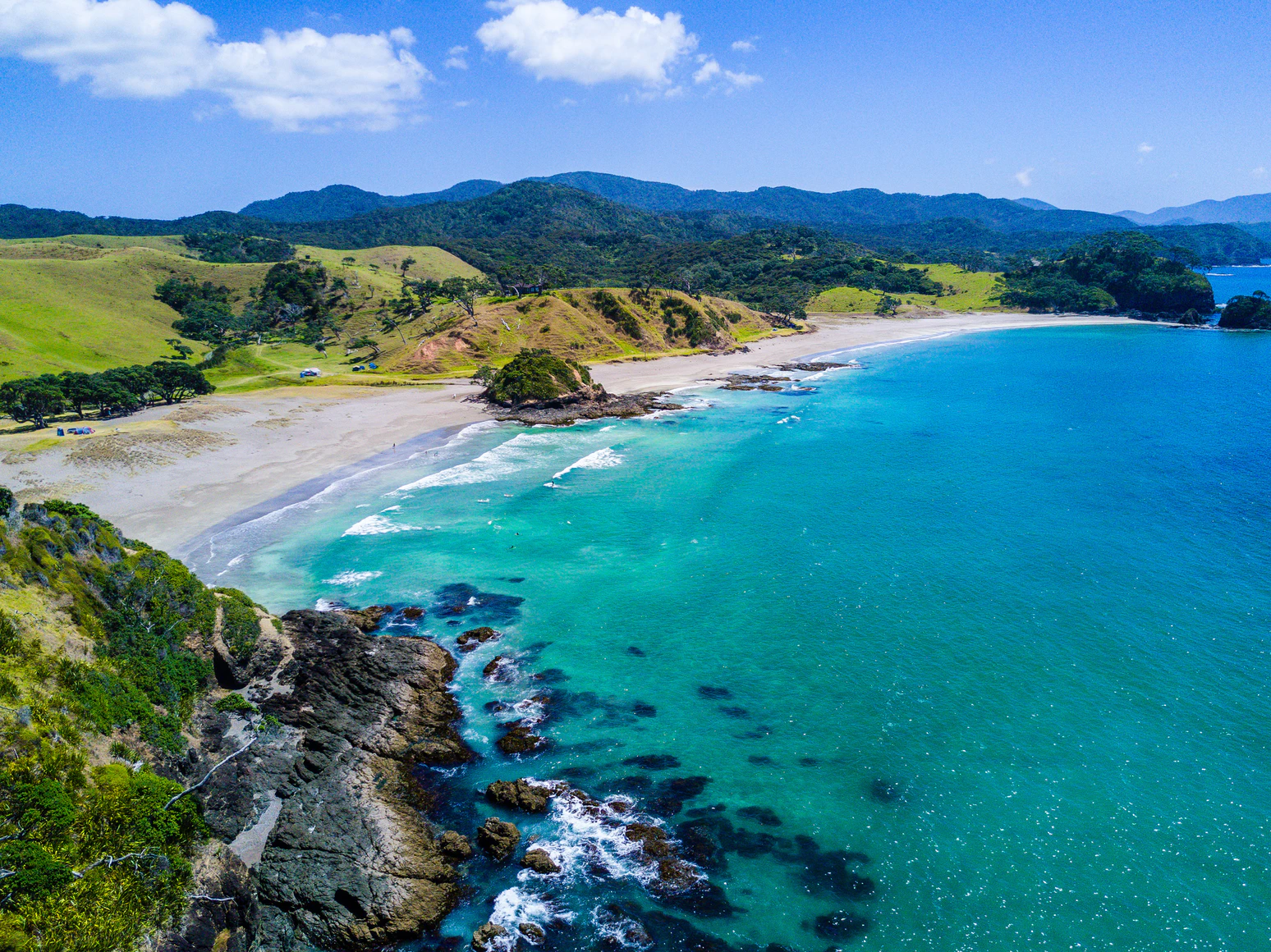
I fell in love with New Zealand on my first visit 30 years ago. Travelling the length of the country is like travelling through the latitudes of the world in just a few hours, from penguins in the Antarctic-like south of Queenstown, through the volcanic Rotorua, to the Pacific-like tropics of the Bay of Islands in the north. My favourite run was in Waitangi Treaty Park, site of New Zealand’s founding agreement, from where you can run for hours on wooden pathways, above the water, and to the Pacific shoreline. And then recover in a outdoor naturally-heated hot tub at the end.
We live in a world of diverse and dramatic challenges – economic inflation, political instability, social inequality, environmental crisis, global fragmentation, unjust conflict, broken supply chains, and much more. Latin America, in particular, is no stranger to such adversity, and volatility.
But with challenge also comes opportunity. Indeed we will probably see more change in this decade, than over the last 250 years.
This is fuelled by the relentless pace of new technology, and in particular the connections of digital platforms, bio tech and nanotech, IoT and robotics, and the data and AI which emerges from it.
But in reality, tech is just the enabler of more dramatic change – of convergent, disrupted marketplaces; of changing customer attitudes and priorities; of new attitudes towards work and the role of organisations in society; and of new opportunities to innovate and grow. And the unforeseen “accelerators” of change in market structures and consumer behaviours, driven by two turbulent years of pandemic and more.
In the old world, size mattered. Big companies, the largest customer bases, the highest revenue, and market share. None of that matters today.
In the new world, markets are fragmented and discerning. It’s about focus, relevance and speed.
Mass-marketing doesn’t work. Customers are not average. Transactions are not enough. People trust people rather than brands. Purpose matters. Propositions are more personal.
What matters to marketers? Customers, brands and innovation.
Business needs marketers more than ever to unlock these crucial assets and capabilities, in order to make sense of rapid change, to actively shape the future markets, to respond to new entrants and disruptors, and bring the organisation together strategically and operationally to drive profitable growth.
Look at my new analysis of Latin American “Gamechangers”, shaking up markets right now. I will be launching this at CAMP 2022 in Lima, Peru next week:

What can we learn from these brands who are thriving in some of the world’s most adverse, uncertain, volatile markets?
They constantly adapt and change. They imagine their own futures. They search and seize new agendas. They find new spaces in markets, or create entirely new markets. They embrace tech in smart, human, creative ways. They find a core then scale fast, but have no respect for all boundaries or conventions. And they have leaders with courage, persistence and optimism.
Some of them a well established, large and global – like the wonderful cosmetics business Natura & Co, inspired by natural vibrancy of the Brazilian rainforests. Others are admired in the same breath as tech giants – Mercado Libre is a superstar of retail, Nubank of neo-banking, Rappi as a super-app. And others are relatively small but making a huge difference locally – like Elenas, the social commerce platform liberating women, and Peru’s Crehana, providing online vocational education to Latam youth.
They are just 12 examples, of the many more fascinating, creative businesses in Latin America.
Camposol … the world’s best blueberries, from Peru
Peru’s Camposol is a fresh food business in more than 40 countries. It is involved in the harvest, processing and marketing of high quality agricultural products such as avocados, blueberries, grapes, mangos and mandarins, among others. The new sustainable initative “Camposol Cares from Farm to Family” aims to gain better conditions for the farmers. Managing Director José Antonio Goméz talks about the impacts of the growing demand for avocado in Europe:
https://www.youtube.com/watch?v=6nUyxidVfNo
Cariuma … the Brazilian vegan sneakers
The Brazilian sneaker brand believes in making good-looking, crazy-comfy and consciously-made sneakers. “We want the shoes you wear to be made responsibly, feel crazy comfortable and provide effortless style.” 100% Vegan skate shoes, the new, high performance vegan suede is 2.5X more resistant than animal suede, while recycled fabric webbing creates more durability.
Crehana … online vocational education from Peru
Crehana Education is one of the largest online learning platforms in Latin America that provides highly relevant online training to over 2 million young adults. 66% of Latin American youth do not have university degrees or higher technical education, and around 20% of young people are unemployed. The company, based in Lima, Peru, uses a project- based methodology with industry experts that allows students to acquire valuable skills to work as freelancers or gain employment. 40% of Crehana’s students are women, a percentage with the company is working to increase.
Elenas … the Colombian social commerce platform
Latin America’s top social commerce platform empowering tens of thousands of women across Colombia to launch online businesses and earn extra income by selling products on WhatsApp, Facebook and other social media. Currently, 11 million women across Latin America sell consumer good products through direct sales catalogues and door-to-door sales. Elenas provides a digital solution for them to start an online store, manage clients, and grow their business from home, without having to worry about product sourcing, delivery, or payment collection.
https://www.youtube.com/watch?v=BhcH2uabBxI
Frubana … everything for Latam restaurants from Colombia
Founded by Fabian Gomez, a former McKinsey consultant, and one of the founders of Rappi, Frubana provides everything for Latin America’s restaurants. It is a fast growing technology B2B scale-up revolutionising the world of agriculture and the restaurant industry.. “Connecting the countryside and different suppliers with the city, through a digital platform with a wide portfolio of products for the restaurant sector.”
Kavak … used car super platform from Mexico
Kavak is the top e-commerce platform to buy, finance and sell pre-owned cars in Latin America. Driven by data, technology and innovation, it is the 2nd biggest startup in the region with 40+ stores in Mexico, Argentina and Brazil. Currently the 2nd largest startup in Latam with a valuation of around $9bn. Founder and CEO Carlos Garcia says “In Kavak our dream is to build something memorable, it will take us a long time and we will learn from every experience.”
Mercado Libre … Argentina’s online retail success
Founded in 1999 and headquartered in Buenos Aires, Mercado Libre is Latin America’s leading e-commerce technology company. Through its primary platforms, MercadoLibre.com and MercadoPago.com, it provides solutions to individuals and companies buying, selling, advertising, and paying for goods online. Mercado Libe serves millions of users and creates a market for a wide variety of goods and services in an easy, safe and efficient way. Read my Leader Profile of Marcos Galperin
Natura & Co … the world’s leading natural cosmetics from Brazil
Natura & Co is a Brazilian global personal care cosmetics group based in São Paulo. The group currently includes Natura Cosméticos, Aesop, The Body Shop and Avon. It is present in 73 countries across all continents except Antarctica. Natura Cosméticos, the parent company, was founded in 1969 by Antônio Luiz Seabra and went public in 2004. The company’s mission is to “Create and sell products and services that promote bem estar bem : well being / being well”.
NotCo … AI-enhanced plant-based food from Chile
NotCo is a unicorn Chilean food-tech company producing plant-based alternatives to animal-based food products. NotCo was founded in 2015 by Matias Muchnick and others, and utilizes machine learning to replicate dairy products in plant-based forms. Its algorithm “Giuseppe” was created by Karim Pichara and patented in 2021, and utilises lists of plant ingredients to find the ideal combinations to recreate specific food attributes. This aims to replicate various food tastes, textures and cooking behaviors. NotMilk includes both pineapple and cabbage, allowing it to cook in the same way as cow’s milk.
Nubank … banking for the unbanked from Brazil
Nubank is the leading financial technology company in Latin America and the largest independent neobank in the world, with more than 20 million clients. Its first product, launched in 2014, is a no-fee credit card that is fully managed by a mobile app and used by more than 12 million customers. Almost 36 million Brazilians have requested its products. In 2017, Nubank launched its proprietary loyalty rewards program “Nubank Rewards”, as well as a digital account “NuConta” that is already used by more than 17 million people. Read my Leader Profile of Cristina Junqueira
Nuvocargo … the logistics platform from Mexico
Nuvocargo provides an all-in-one digital logistics platform for shippers and carriers moving goods between the US and Mexico, consolidating key services including truck procurement on both sides of the border, customs clearance, insurance, and trade finance. With dual HQs in New York and Mexico City,it increased its monthly shipments by over 400% in the first half of 2021 versus 2020.
Rappi … the Colombian super app
Rappi is Latin-America’s first “super-app“. It was founded in 2015 by Simón Borrero and others and today is present in 9 countries and more than 200 cities. “We are a young Latin American team of technology entrepreneurs with a mission to drive progress in our region through our platform for digital commerce.” By 2020, Rappi had more than 200,000 independent couriers actively connecting to the app in Latin America. Rappi also worked with over 250,000 different businesses including groceries shops, pharmacies, kiosks, and office supply stores.
Dialogue magazine reflected on the opportunities for Latin American business, saying “There’s something stirring south of the Rio Grande”, and how it has the potential to become a “leapfrog” region, jumping to the future …
The future can look good for Latin America, if Latin America gets out of its own way
Progress 5/10 … Latin American politicians continue to swathe tech in red tape. There is a large body of thought in the region that innovation is best overseen by active government action. There is little global evidence for this. Governments would be better acting as facilitators for a new generation of entrepreneur.
More seed money is required for startups and entrepreneurs
Progress 8/10 … Remarkably, LatAm tech startups raised more cash in the first six months of 2021 than in all of 2020 – a cool US$9.3bn. There is enhanced interest from investors – Softbank, for example, created a US$5bn LatAm fund in 2019, committing an additional US$3bn in 2021. The result is a new breed of LatAm unicorns growing up in a much healthier venture capital environment.
Technology education will allow the region to move forward
Progress 6/10 … The pandemic choked off an otherwise encouraging trend. By September 2021, Covid-19 had contributed to a region-wide crisis in school attendance, with two-thirds of LatAm children still outside the classroom. Outside schools, the situation is rather better. Technology educational programmes are emerging across the region. The private sector is leading the way. US tech giant Oracle, for example, has launched a skills development programme which aims to train some 40,000 people in IT by the summer of this year.
Maximize opportunities in neobanking
Progress 7/10 … The most heart-warming development in the region is its progressive outlook on reimagining money. Part of this stems from context: stifling regulation in many LatAm nations renders it inordinately difficult for people to get a bank account, creating chronic financial exclusion region-wide. Neobanks have stepped into the vacuum. The likes of Nubank, Uala and Oyster have expanded banking services to demographics that were previously unbanked.
On the downside, El Salvador has unwisely become a global crypto pioneer: in 2021 it became the first country in the world to adopt bitcoin as legal tender. This is economic suicide: in the long-term, bets on Ponzi schemes are likely to fail.
Increase supply of outsourced services
Progress 8/10 … A perfect storm of global skills shortages, Covid-19 and geopolitical tensions between the US and China has opened a huge door to LatAm tech outsourcing. The region has been impressively effective in taking advantage. Suppliers of outsourcing tech services have continued to expand region-wide.
More from Peter Fisk:
- Marketing Recoded with Peter Fisk at CAMP 2022 in Lima, Peru
- Q&A with Peter Fisk in advance of speaking at CAMP 2022
- New Marketing Agendas ideas and insights by Peter Fisk
- Business Recoded the new book from Peter Fisk
- 100 Leaders shaking up the world, case studies
- 100 Companies shaking up the world, case studies
- Video Gallery of recent keynotes by Peter Fisk
The “ambidextrous” challenge of a business leader has become increasingly important in a world of relentless change.
Leaders need to be able to deliver high performance today, and simultaneously transform the business for tomorrow. Not just occasionally, but continuously. Not just as a balance, implying a bit of each, but to do both effectively.
25 years ago I wrote an article called “leading in double time”. The same idea. Now it matters more than ever, because leaders are at the heart of economic value creation.
Economic value which is driven partly by performance today, but equally by what you do today to create the profit streams of the future. In the past, the future was not so different from the past, now it most likely is. That’s why transformation is essential, and relentless.
New research by Korn Ferry focuses on these polarities – the ability to perform and transform at the same time:
The report headlines “Today’s leaders are being asked to simultaneously run the business and change the business” and concludes “only 14% of leaders have what it takes.”
“CEOs today are leading in a world moving through crisis and disruption—where challenges have no known solutions, or if they do, there are far too many choices and few clear ones. Yet even while driving change amidst all this uncertainty, they need to keep the trains running on time.”
Perform and Transform can feel like a tension, or a paradox. The challenge is to think otherwise, to embrace a new mindset and capabilities that enable both at the same time.
Scott Anthony, a good friend who leads Innosight, has long explored what he calls “Dual Transformation” – the ability to improve today, while also transforming for tomorrow. His point is that yes, you want to achieve both, but you only have today, and you only have what you have.
Korn Ferry adds “If leaders focus on transformation only, they risk failing to hit their numbers; if they focus on performance only, they risk falling behind their competitors. In reality, they are two sides of the same coin.
Think of today’s demand as a constant sway between performing now and transforming next. Even though the traditional business mindset puts these capabilities at opposite ends of one spectrum, they are not, in fact, mutually exclusive. Rather, they are simultaneous, ambidextrous, and symbiotic—they are true and actionable at once. An enterprise leader can perform as much as possible and transform as much as possible. It’s about maximising both capabilities—and not at the expense of one or the other.

Indeed, many enterprise leaders have sat at the helm of highly transformational companies that delivered extraordinary results. But these top-performing CEOs were once seen as the exception to the business rule. Today, however, more and more organizations are creating Perform-Transform strategic priorities in order to meet the needs of this increasingly complex and uncertain environment. But for companies to implement these agendas successfully, we need a different kind of leader—one who has the capabilities to both perform and transform, along with the capacity and agility to pivot dynamically between the two, all in order to create impact across and beyond the enterprise and broader ecosystem.”
The global environment is more volatile, more interconnected, and more competitive than ever before. Indeed, over 85% of CEOs interviewed by Korn Ferry for its CEOs for the Future study told us the historical “line” between business and society is ever more porous. As a result, CEOs, C-suite leaders, and other senior executives must now respond to multiple stakeholders simultaneously, all while they handle challenges more complex, situations more ambiguous, and duties more significant than their predecessors faced.
5 “Perform Transform” Mindsets
Korn Ferry’s research shows that “Performer Transformer” Leaders grow organisations 6.7% faster than their peers, but less than 14% of executives can be considered as such.
- Purpose: they believe they should apply and grow their gifts in order to more powerfully give to others, the enterprise, and beyond.
- Courage across and beyond: they believe in identifying and addressing enterprise problems and opportunities, even when unpopular, fear‑provoking, challenging, or outside their control.
- Awareness of self and impact: they believe that their ability to deeply understand and continuously learn about themselves and their impact is foundational to maximise their impact across the enterprise.
- Inclusion that matters: they believe they can multiply impact through connection and inclusion.
- Integrative thinking: they believe that situations and people need to be interpreted in their dynamic relationship to the enterprise and beyond, balancing the interaction of multiple tensions, and generating creative resolutions that are more than the sum of parts.
Find more great leadership insights from Korn Ferry here.
